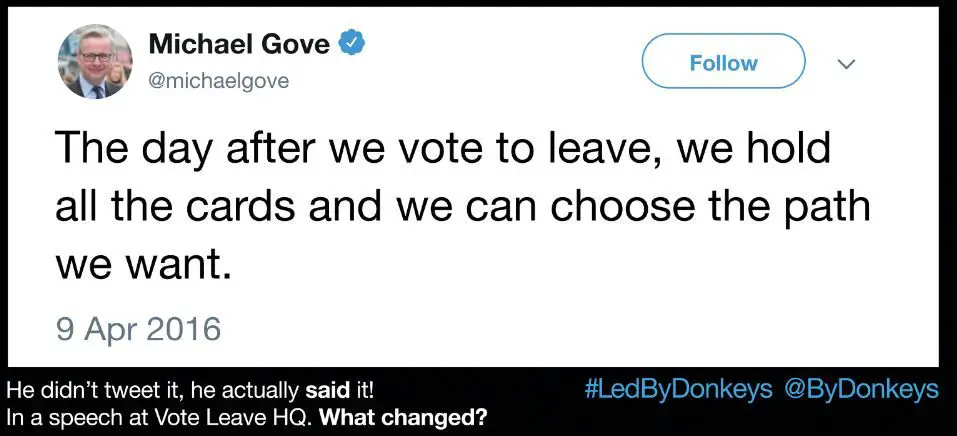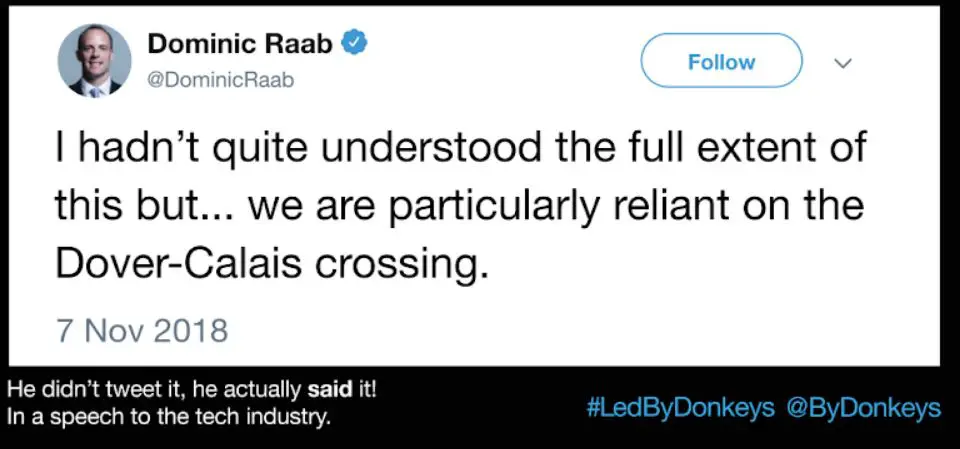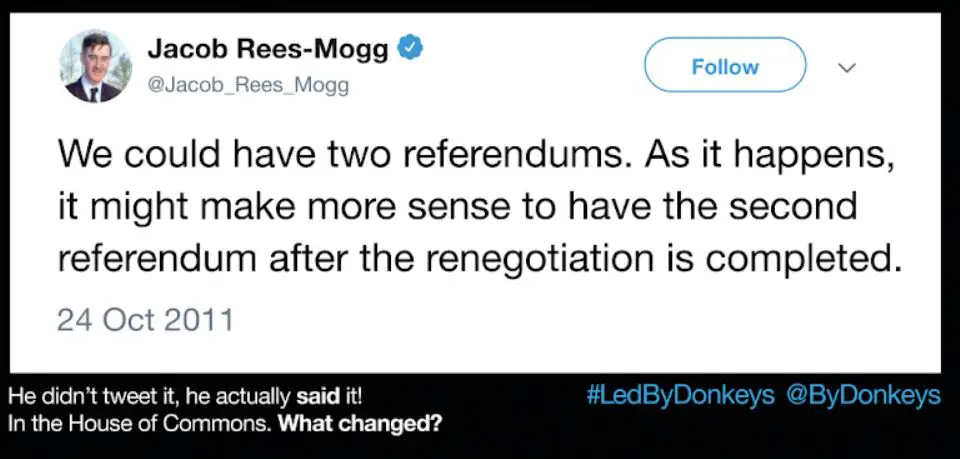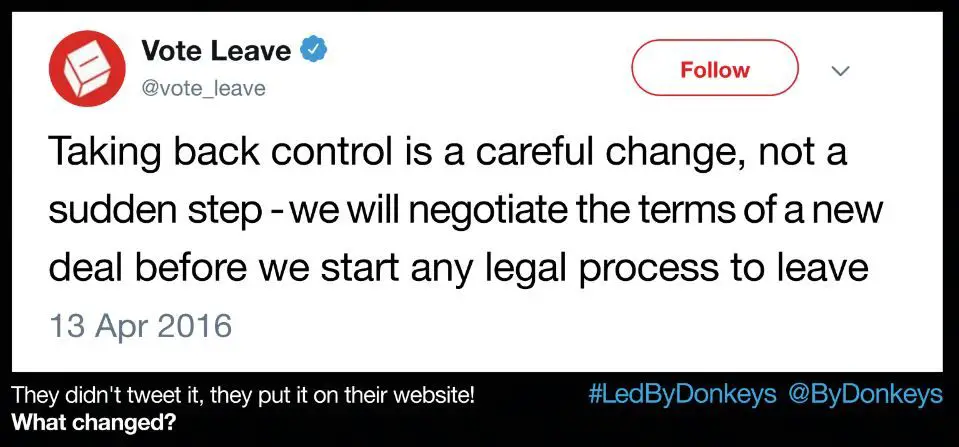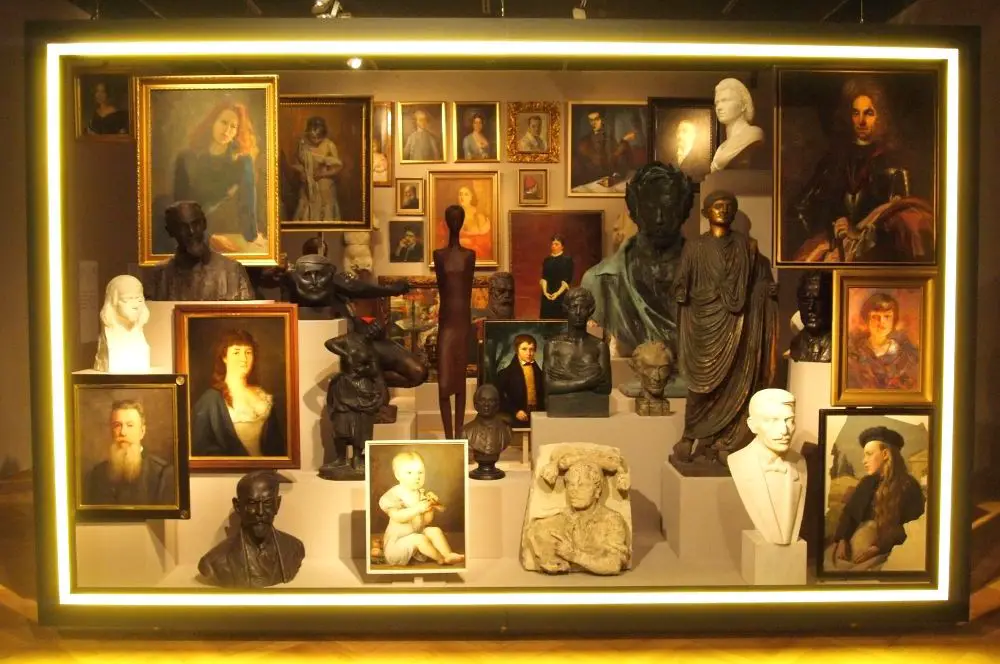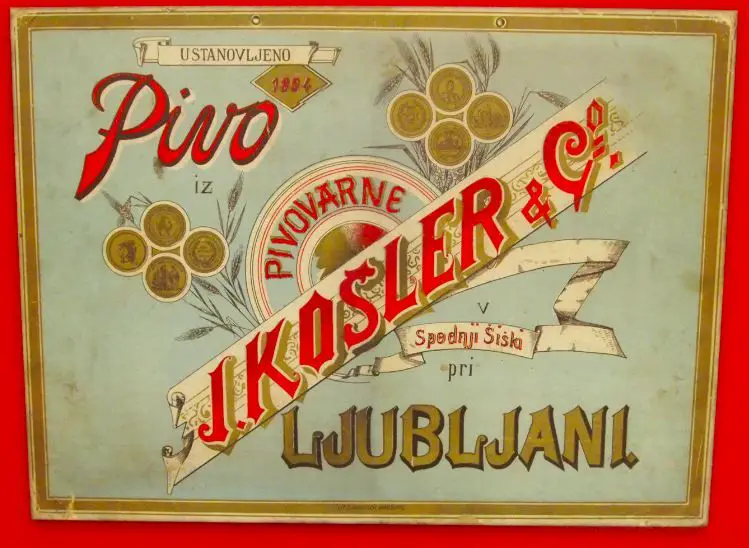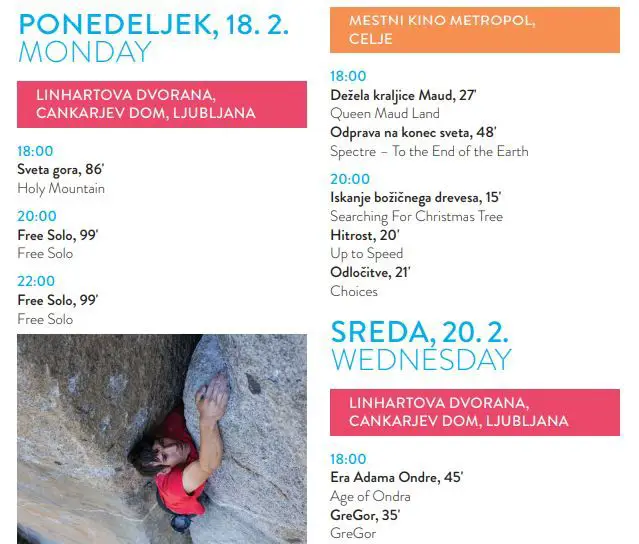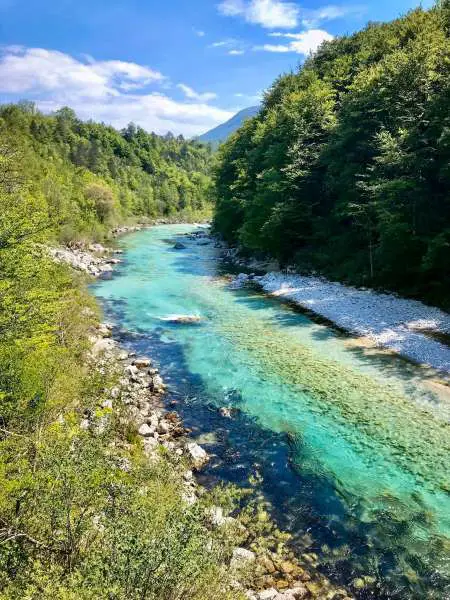Lifestyle
February 20, 2019
Ljubljana Pride Parade will happen on June 22 this year, and preparations for the event have already started.
To make sure everything works as it should, Pride is calling for Slovenian and foreign volunteers, preferably LGBTIQ+ people aged between 18 and 30 who are interested in LGBTIQ+ organisations, topics and politics. Legal EU residence is a must.
In return for help with organisation of the event, volunteers will get accommodation and food expenses covered, some pocket money, and other benefits. There are only 15 vacancies to be filled, so hurry and secure your place in Ljubljana this summer.
Find more details here and here.
Contact: This email address is being protected from spambots. You need JavaScript enabled to view it. or This email address is being protected from spambots. You need JavaScript enabled to view it.
Related: Meet the People: Simona Muršec, President of Ljubljana Pride
I’m a UK national in Slovenia, so trust me when I say I’m doing my best to follow the implications of Brexit for folk like me, and also that this article might no longer be your best source of information. Today is February 20, 2019, and with March 29 – “Brexit Day” – just 37 days away, things are likely to get very dynamic in the next few weeks.
You can follow Led by Donkeys on Twitter
So whenever you’re reading this your most reliable source of information is the UK government’s official webpage for Living in Slovenia. This is clean, well organised and contains links to further information and how to apply for any documents you might need. I recommend you visit this site, bookmark it, and use it as your primary source of information for the UK side of things. You should also follow the Embassy on Facebook and / or Twitter. If you know any British people in Slovenia who aren't on Facebook, or who don't read Total Slovenia News, then telling them about these resources would be a kind thing to do.
You can follow Led by Donkeys on Twitter
With regard to the Slovenian side, where the laws covering your life here are made, the government is still preparing a website to answer your questions. This is expected to be online by the end of February, when – as everyone hopes – there’ll be a more clarity with regard to deal or no deal, and thus what the situation will be. One benefit regardless of what happens, and regardless of whether you’re a UK national or not, is that this site will aim to remove the confusion and discrepancies that now exist at the various Upravna enota around the country, such as whether or not you need to change your UK driving licence to a Slovenian one (you do, and you can find out how to do that here).
You can follow Led by Donkeys on Twitter
Please use these official sources of information, and do not rely on heresay, what was true two years ago, or even what your local Upravna enota says if it contradicts the messages from on high. What follows is a copy of the text being handed out at the various outreach meetings the UK Embassy is having around Slovenia at the moment, dated 18 February 2019
SUGGESTIONS FOR UK NATIONALS IN SLOVENIA (18 February 2019)
Under the terms of the draft Withdrawal Agreement, there will be broad continuity for your rights in Slovenia. The below is relevant only in a scenario in which the UK leaves the EU without a deal. [JL Flanner: But note that deal / no deal might not be clear until 23:59 March 29, so plan for no deal now]
The Ministry of Foreign Affairs of the Republic of Slovenia (www.mzz.si) will shortly be launching a page on their website dedicated to UK nationals resident in Slovenia. providing instructions and advice on what to do before 291h March 2019. Please also follow the Embassy's digital channels and our Living in Slovenia guide for updates: https://www.gov.uk/guidance/living-in-slovenia.In advance of this more definitive guidance, on the basis of our current understanding of the Slovene Government's position, the British Embassy suggests UK nationals in Slovenia consider the steps below to safeguard their rights should the UK leave the EU without a deal.
- Sign up to Living in Slovenia on gov.uk and follow the Embassy's social media channels (Facebook, Twitter)
- If you're staying in Slovenia for more than 3 months, you need to apply for a residence registration certificate at your local town hall (Upravna enota). Please see entering Slovenia.
- Exchange your UK driver's licence for a local one. The process takes up to 2 weeks at your local Upravna enota and costs €22. This will enable you to drive in all EU countries and will also be recognised by the UK.
- If you meet the requirements of the Health Care and Health Insurance Act (ZZVZZ) to be included in compulsory health insurance in Slovenia you will receive a Slovenian health insurance card for the provision of services in Slovenia. You can therefore apply for this health card yourselves or for your family members by the Health Insurance Institute of Slovenia (ZZZS). We suggest all UK nationals resident in Slovenia obtain this health insurance.
- If you are a pensioner and currently access healthcare in Slovenia via an S1 form, you will need to obtain compulsory health insurance as other residents are required to (monthly cost of approx. 30 — 50 euros)
- If you own a 2nd property in Slovenia but are currently resident in the UK you will need to decide whether to consider Slovenia as your official place of residence to enjoy the rights of UK nationals resident here. If you continue to hold your residency in the UK, you may be limited as to the amount of time you are able to spend visa-free in Slovenia (90 days in a 180 day period).
- If you are visiting Slovenia for 3 months or less or have family or friends travelling to Slovenia for short-term visits, we recommend obtaining private travel insurance to cover healthcare costs for the period you are visiting.
- Dual nationality will not be permitted after 29 March 2019 for most people (exceptions include being of Slovene descent). The Slovene government have confirmed that all applications for dual nationality before 29 March 2019 will be treated on the same basis as now (i.e. you will be able to hold dual nationality).
- If the UK leaves the EU without a deal, passport validity requirements will change. You should ensure that you have at least 6 months validity on your British passport before the date of entry to the Schengen area, including entering Slovenia.
You can follow Led by Donkeys on Twitter
STA, 19 February 2019 - A civil initiative has been formed to fight sexual abuse by members of the Slovenian Catholic Church, and to provide comprehensive assistance to victims of such abuse, including psychosocial and legal assistance in criminal and church proceedings.
The initiative Dovolj.je (It's Enough), which was presented to the press on Tuesday, calls for full protection of victims of sexual abuse and urges the Slovenian Catholic Church to show zero tolerance to such acts.
It connects active Catholics of various professions who have indirectly or directly faced sexual abuse in the Slovenian Catholic Church.
Its member Igor Vovk said at today's press conference in Ljubljana that the initiative had been launched because its members believed that the Catholic Church did too little to protect victims of sexual abuse.
Vovk, who heads the Catholic portal Iskreni.net, added that the Catholic Church should also take more concrete, quicker and more determinate measures against perpetrators.
"It's hard to hear testimonies by victims of sexual abuse, and it's even harder to hear they haven't been taken seriously by those in charge," he said.
"Many perpetrators have faced no consequences, and when measures were taken, they were too mild. We won't tolerate this any longer, regardless of how high the position the Church dignitary involved in such acts," added Vovk.
Members of the initiative and experts in various fields may as of today be contacted at the website dovolj.je, which is a "safe space" for the victims to report and testify about sexual abuse by Church representatives.
All Slovenian bishops are expected to take every reported case of abuse by any priest or religion teacher seriously and remove the perpetrator from the position where they can repeat the act.
Tomaž Pisk, who represented several sexual abuse victims in church proceedings, noted that the guidelines for what measures to take in case of sexual abuse, whose latest version was adopted in 2014, were not being fully implemented.
Pisk added that the initiative encouraged everybody to report sexual abuse by clerics at the website, even if the abuse had been experienced a long time ago and even if the perpetrator had already died.
The initiative was presented last week to Ljubljana Archbishop Stanislav Zore, the head of the Slovenian Bishops' Conference, which said in a press release today that the Slovenian Catholic Church had zero tolerance for any case of sexual abuse.
The conference said a series of measures had been taken in that department, including the establishment in 2009 of a task force for resolving sexual abuse cases. According to its statistics, the group dealt with two reports of sexual abuse in 2017.
So far, the task force looked into 12 cases of alleged sexual abuse. Only four of the cases were also investigated by the police, according to a report by public broadcaster TV Slovenija.
The perpetrators in all 12 cases were men, clerics, while the victims were all minors, five girls and seven boys.
The task force also told TV Slovenija that a total of 18 priests exited the clergy since 1993 in Slovenia. Some did so of their own volition, some were stripped of their function as a punishment.
All our stories about the Catholic Church in Slovenia can be found here
February 18, 2019
It is clear that Zala Kralj and Gašper Šantl will represent Slovenia at the 2019 Eurovision Song contest in Tel Aviv. So decided the national broadcaster’s audience in a show called EMA, but only after the jury of three judges made sure that Slovenia doesn’t lose face internationally with some weird metal or turbo oom-pah stuff. Luckily, when we were already pretty much asleep, last year’s winner and one of this year’s judges Lea Sirk, dropped a double f-bomb at the end of the show in support to the runner-up Raiven. Thanks to her, the nation woke up and is now fighting over which song is better or rather, which one is worse.
Lea Sirk: (f*** come on, I can’t f***ing believe this)
Lea Sirk explaining in backstage: Zdaj je cela senzacija okrog tega, zakaj sem jaz rekla, ozvočena, faking ne morem verjet. In ja, to sem faking mislila: ne morem verjet, ker sem bila prepričana, da bo zmagala Raiven. Ko jih jebe! (Now there’s a total sensation about why have I said, on a mic, I can’t f***ing believe this. And yes, this is what I f***ing meant: I can’t believe (this) cause I was certain Raiven would have won. F*** them!)
Raiven, 22, appeared on the EMA scene three years ago with purple hair and a harp in her hands. She came second but many believed she was the one to revive Slovenian pop with a pinch of that fresh neo-goth feel of hers. A hint that expectations might be running a bit too high was already sensed in her second EMA performance, which cut significantly on the goth and harp input and played extensively on Raiven’s second job as a model. Her third performance on EMA was not as a contestant but rather as the host of the show, and she was the one to announce Lea Sirk as the 2018 winner. That was when her hair was half blue half purple, and Lea’s hair was pastel lavender.
The rules of EMA change every year, and this year it was particularly clear that surprise was given as little chance as possible. It was quite apparent that Raiven was the pop establishment’s favourite, and the new rules allowed the jury of three to eliminate from competition everyone but two contestants. Raiven’s performance was announced with the following words: “Every year after the winner of Eurovision is known, dozens of copy-cats emerge, trying to catch that secret recipe for success. But something completely different wins in a year that follows. So, has there ever been a winner with green hair? No. Has there ever been a winner who played harp? No. Has there ever been a winner that is named after a crow? No. On EMA she has performed in the accompanying programme, as its host, was once third and once second. There is nothing left for her but to win. First at home, then at Eurovision.” Then Raiven appeared, without a harp, and put on stage something that looked and sounded very much like Lea Sirk’s performance last year.
The jury then offered Raiven and Zala Kralj & Gašper Šantl to the public to vote for the winner. The sleepy esoteric duo won the popular vote in a landslide. They did not have much to say on the impolite behaviour of Lea Sirk, nor the subsequent comment wars on social media. “We do not follow the comments nor do we have time for that ” they stated for the MMC. “EMA is full of a variety of emotions, which is ok, but it is also true that we could be using our opinions to make the world better, not worse.”
STA, 15 February 2019 - A photovoltaic array in Jesenice has become the first solar power plant in Slovenia installed on an apartment block. The EUR 36,400 installation operated by energy group GEN-I should pay for itself in seven years and GEN-I expects more such projects to follow given recent legislative changes.
After as many as 2,000 rooftop solar arrays were installed in Slovenia in the last couple of years, legislation was passed last year allowing apartment buildings, not just single-family homes, to have photovoltaic panels installed.
But the process is not easy. "When we first contacted the residents, we though our chances were slim because the law is not very conducive of such projects. But the residents were incredibly persistent. We gladly followed them and after six months we have the first such solar plant in Slovenia running," GEN-I CEO Robert Golob told the press on Friday.
According to the building's representative Brane Zajović, all residents had to give their consent. In the building with 23 apartments, this meant 55 people.
"Our main goal was to cut our monthly utility costs, which are rising by the year," Zajović said, noting that they had installed a heat pump at the building six years ago, which reduced annual heating costs from EUR 11,000 to EUR 3,000.
In the next seven years, the residents will be paying off the EUR 36,400 investment in the solar power plant in monthly instalments matching their electricity bills so far. After that, they will have no electricity bills, Golob said, noting that the power plant's life span was 30 years.
The photovoltaic solar panels on the building will produce 37,000 kilowatt hours of electricity a year.
Although Jesenice does not get a lot of sunshine in the winter, the plant will be only 5% less efficient than it would be in Kranj and 15% less efficient than it would be in the coastal town of Koper, Golob said.
He expects other buildings to follow the Jesenice example, especially since legislative changes are under way to speed up the permit approval process from six months to one month.
Hinko Šolinc of the Infrastructure Ministry said the changes of the relevant decrees were expected to enter into force in March. They will not only facilitate the installation of rooftop solar but also allow buildings in the vicinity of a solar power plant to use surplus power.
STA, 16 February 2019 - The duo of singer Zala Kralj and instrumentalist Gašper Šantl will represent Slovenia at the Eurovision after winning the Slovenian Ema contest on Saturday with an electro ballad entitled Sebi (To Myself).
The duo, for whom this is a break-out performance, were declared winners by televote in a super-final that pitted them against the popular Raiven, who has unsuccessfully tried twice before to secure the Slovenian Eurovision nomination.
The contest featured ten performances selected by a jury from among 100-plus applicants.
The competition jury, which included 1995 and 1999 Ema winner Darja Švajger and last year's winner Lea Sirk, then selected the two super-finalists.
The weather’s been great the last few days, with clear skies and relative warmth bringing a touch of Spring, and the tables outside café bars filling up with people enjoying the sun, the city and friends. While we’ll always make a case that you can get to know Ljubljana by just walking the streets and seeing what happens, which is how we mainly enjoy it, in truth that’s just half the story, if that, with the city’s museums, galleries, concert venues and so on providing a solid foundation to the quality time you can spend here. What follows is thus a selection of happenings and events over the next seven days, with the stand out, to these eyes, being the Mountain Film Festival. You can find out why it’s such a big deal here.
Something new we added this week was a write-up of the Balassi Institute, which brings Hungarian culture downtown with many free events. We’ll put these in the regular listings next time, but for now check out the events page here.
If you're not in town for the week of this guide (Feb 19 - 24, 2019) then you can see all the editions here, and you can enhance your stay in the city and impress or annoy friends and companions by learning some obscure facts about the city here, and the Castle here.
As ever, clicking on the venue names in the list below should get you more details with regard to the time, price and location, as well as other events on at this place in whatever week you're here. Finally, if there's something you want to promote in a future edition of What's on in Ljubljana please get in touch with me at flanner(at)total-slovenia-news.com
- Cinemas and films
- Clubbing
- Live music
- Opera, theatre and dance
- Harm reduction and drug testing
- Things to do with children
- LGBT+ Ljubljana
- Ljubljana Castle
- Museums and galleries
- Other things to do in Ljubljana
- Daytrips
- Getting around and other things
Cinemas and films
You can read about all the cinemas in town here, while a selection of what’s playing this week is below, and note that kid’s movies tend to be shown in dubbed versions, so do check before driving out to a multiplex and dropping off the young ones if they can't understand Slovene. Parents should also pay attention to Kinobalon, which is Kinodvor's regular weekend series of film screenings and events for children, from babies on up, with special parent/child events, "first time in a cinema" screenings, and babysitting. Learn more about it here, and see the current schedule here.
Kinodvor – The arts cinema not far from the train station is showing, among other features, Green Book, Beautiful Boy, Maria by Callas, Dogman, Cold War and If Beale Street Could Talk.
Kinoteka – This revival cinema isn’t far from Kinodvor, at the train station end of Miklošičeva, is having a mini Lars Von Trier season, including Nymphomania, parts 1 and 2, and The House that Jack Built, with viewer discretion advised for all three. There’s also Fish Tank and Paul Thomas Anderson’s outstanding There Will Be Blood.
Kolosej - The multiplex out at BTC City Mall is playing all the big movies, which this week include Papillion, Taksi bluz, a dubbed version of How to Train Your Dragon: The Hidden World, Green Book, Vice, Mary Queen of Scots, The Upside, Ralph Breaks the Internet: Wreck-It Ralph 2 (dubbed), The Grinch, A Star is Born, Bohemian Rhapsody, Escape Room, Lego Film 2, Cold Pursuit, Alita: Battle Angel (2D and 3D), Qu'est-ce qu'on a encore fait au bon Dieu? and Happy Death Day 2U. New this week are Berlin, I Love You, Beautiful Boy, Dumplin' (starts Tuesday), and Instant Family (starts Wednesday).
Komuna – The cinema in a basement behind Nama department store is showing Qu'est-ce qu'on a encore fait au bon Dieu?, How to Train Your Dragon: The Hidden World (dubbed), Beautiful Boy and Green Book.
Clubbing
Compared to some European capitals it can seem that nightlife in Ljubljana ends rather early, especially along the river, but there are still bars that stay open late and clubs were you can dance until dawn, and perhaps the best place to stumble across something interesting is the legendary Metelkova. Be aware it's a grungy kind of place and not for all tastes, but also that there's considerable variety to found within the various clubs there, from death metal to electropop, gay cabaret to art noise. You can read "the rules" of the place here.
Božidar - Friday there’s an all-nighter with Charlie Bones (Do You Records, NTS Radio / UK) b2b Illum Sphere (Ninja Tune, NTS / UK).
Channel Zero – Friday there’s also an all-nighter at this Metelkova-based venue, with DeepEnd! - winter showcase, presenting sound system music culture with Dub/Step/Grime/Jungle.
Gala Hala – Friday it’s Swaguljčica, with DJs Cookie, Toljo, Borka and White AF playing hip hop and trap. Saturday the beats turn to techno, with sets from DJs Deja Visitore and Shekuza.
Klub Cirkus – Monday the klub will be full of students from all the EU, with the Erasmus WELCOME PARTY / Biggest & Loudest. The next night it’s a part for all the students, with Poizpitni žur vseh fakultet, playing house, disco and party music. Things are then quiet until Friday, when it’s Crazy Cirkus ft. Clay Clemens, playing EDM. Then on Saturday it’s One Hit Wonder - Premiera! With tunes from the 80s until now.
Klub K4 – Now moving into it’s 4th decade, the klub for kool kids that’s not in Metelkova has drum’n’bass on Friday, with K4DNB w/ Pythius (NL) [Blackout]. Saturday brings Just A Dance, with DJs b2b2b, DEN7EL, Von Meister and Elovetric.
Koncertna Dvorana Rog – Saturday this venue at the dirty end of Trubarjeva, not far from the TSN squat, has Raggalution - Roots Rog Reggae Party (feat. Ras Levi), from 23:00 to 04:00
Orto Bar – Friday, 21;00 to 05:00, this rock-friendly venue will be putting down the guitars and picking up the turntables for a Super Mega 80s Party, with the sounds provided by the 80s Crew. Pictures of earlier events by this team suggest that low pressure, high pleasure times can be expected.
Live music
Božidar Thursday, 20:00 to 01:00, there’s Jazz Klub Mezzoforte with the Kostanjev Sekstet, followed Freestyle Karaoke & Jam Session. You can see the band playing on Cobblers’ Bridge below.
Cankerjev dom – Svetlana Makarovič is kind of a big deal, and has been for decades, and on Saturday evening you can see her on stage in a show called Instead Of Flowers, “a concert of original chansons”, with guests including Iztok Mlakar, Tomaž Mihelič Marlena, Andrej Rozman Roza, Ivan Rupnik, Janja Majzelj, Miha Bezeljak, Višnja Fičor, Ivan Peternelj, Anja Novak, and Martina Feri.
Cankerjev dom – Thursday and Friday, 19:30, Daniel Müller-Schott will be playing the violincello.
Channel Zero – Thursday, 21:00 to 0:00, it’s Level 15: Brom (RU) + Brgs: Free DBeat, with free jazz.
Gala Hala – Thursday you can enjoy stoner, garage, and alt rock Bring On The Vanguards.
Kino Šiška – On Monday evening you can learn more about “noise drone masters DIE! GOLDSTEIN and Kikiriki, who bring fresh socio-political content and contexts to music through an articulated personal approach. The authors spread a giant psychedelic mass through the vacuum of space, shaping it into an audio-visual journey.” Tuesday it’s the turn of German pianist, composer and producer Martin Kohlstedt, while the next evening you can see The Strange, with support from Malamor. The end of a packed week at this large venue that’s a short bus, bike or car ride from the centre brings the Amsterdam-based collective Altin Gün, who “will open the door into the unknown, into a blend of Turkish tradition, Western funk and psychedelic rock that places the stated expressions into a completely fresh context.” Check out all the headline acts below.
Klub Gromka – Tuesday night this Metelkova club presents the opportunity to enjoy grindcore and metal from a triple bill that includes Project for Bastards, Sedmina and Facial Tissue Dispenser. Thursday the event is FriForma, with Sugimoto, Dupleix, Bazelaire + Tomažin and Grom, and sadly I can’t seem to find any examples of their work. There are no such problems with Parnepar, the ex-Yugo post-punk bank who’ll be playing here on Friday.
Ljubljana Castle – Friday night is jazz night at the Castle, and this week it’s Milan Stanisavljević - "Weight of Thought".
Orto Bar – Kadilnica of Death are back with another metal event, this one with a triple bill of Morywa, Maskardh, and Morost (this last band sharing a name with my accountant).
Slovenska filharmonija – Sunday the choir of the Philharmonia will be performing at 19:30, with a programms that includes Gallus and di Lasso.
Opera, theatre and dance
Gledališče IGLU - IGLU Theatre – Saturday night this group is usually putting on an English improv show somewhere in town, but it’s generally promoted after this is written, so check the Facebook before putting on your shoes.
Mini Teater Ljubljana – The English schedule of varied performances for the month is here.
SNG Opera and Ballet – Tuesday Verdi’s La Traviata will be staged in this lovely theatre between Prešeren and Tivoli.
Pocket Teater Studio – Tuesday and Wednesday, 20:00, there’s a show of music and movement called Pod Voda (Under Water). Note that the number of seats in this small venue is very limited, and thus you should make a reservation via This email address is being protected from spambots. You need JavaScript enabled to view it..
Harm reduction and drug testing
Drogart is an organization that aims to minimise harm on the party scene, and offers drug-testing services and reports on their webpage. It’s in Slovene, but you can Google translate it or work things out yourself, and our story on the group is here. You can find the latest warnings on fake drugs and high strength pills and powders (in Slovene) here. However, be aware that all the usual drugs are illegal in Slovenia.
Things to do with children
You can find our Top 12 list of things to do with kids in Ljubljana here. If want to read more about the philosophy behind the wonderful House of Experiments look here, while our trip to the Museum of Illusions is documented here, and there’s always riverside walks, pizza and ice cream. With regard to the latter, take a look at our guide to six places that serve good ice cream in winter.
Mini Teater Ljubljana – The season sees a lot of puppet performances for children, in Slovene, at this theatre not far from Križanke. The English schedule for the month is here.
Ljubljana Puppet Theatre - The puppet theatre near the Central Market and next to the Castle funicular has a full programme or shows, for children and adults, with the schedule here.
LGBT+ Ljubljana
If you want to learn more about Ljubljana Pride, then take a look at our interview with its president here. If you're looking for more general links on "gay Slovenia", including a history of the scene and various projects, then you can find that here, while our stories about the community can be found here.
Klub Monokel – This lesbian bar in Metelkova is open every Friday, and is next to the open gay bar below.
Klub Tiffany – The gay bar next door is also open on Fridays, while every Monday until June 2019 there's tango at 18:00. On Thursday, 20:00 to 22:00, there’s a concert by the singer Tatjana Mihelj. Saturday there’s then Drag Trash – Out, which seems to be a drag-based lip sync party.
Pritličje – This seems to be the only "always open" LGBT-friendly cafe / bar / events space in town, and perhaps the country, so it's a good thing it's such a good one, open from morning to night, and with fliers and posters letting you know what's happening outside the narrow confines of, say, a general interest online what's on... guide.

Screenshot from Google Maps, showing the location of the Castle vineyard
Ljubljana Castle
The city’s main attraction is said to be the top tourist draw in the country overall, and to my mind it earns a spot near the top just for the history and views. But beyond that the current owners, the City of Ljubljana, have laid out a varied, interesting and enjoyable programme of events, one that rewards regular revisits.
I try and get up there every Saturday morning to clear my head and move my feet on the trails, and never tire of that end of the hill. At the other end, where the Castle sits, there’s a lot more than fresh air on offer. There are guided tours, restaurants, a café, Castle museum, puppet museum, a Watchtower you can climb to the highest point in the city, art shows, dances, live music, movies under the stars, festival days and more – enough to reward multiple trips up the hill through the year. All of these activities and events can be found on the Castle website, while on TSN you can see “25 things to know about Ljubljana Castle” here, and “Ten Ways to Enjoy Ljubljana Castle” here.
Museums & Galleries
Most public galleries and museums are closed on Mondays, although not the National Museum, and - as noted at the start
Plečnik's desk. Photo: JL Flanner
Plečnik’s House is worth a visit if you want to learn more about the architect who gave Ljubljana much of its character. Read about our guided tour here.
Cankerjev dom – On until February 28 is the exhibition Ivan Cankar and Europe, Between Shakespeare and Kafka, while until March 10 there’s a photographic show on the Ljubljanica, with images of the city’s river captured by Bojan Velikonja. Showing until the end of March is a selection of specimens from The Newspaper Museum.
City Museum – The Museum in French Revolution Square also has an exhibition on the writer Ivan Cankar that’s on until the end of February 2019, with pictures, books and manuscripts, all presented in Slovene and English. It also has a very interesting permanent exhibition on the history of Ljubljana, from prehistoric times to the present day, with many artefacts, models and so on that bring the story alive.You can read about my visit here. Until March 2019 there's a show highlighting the work Elza Kastl Obereigner (1884-1973), a pioneer Slovenian sculptress, with an example of her work shown below.
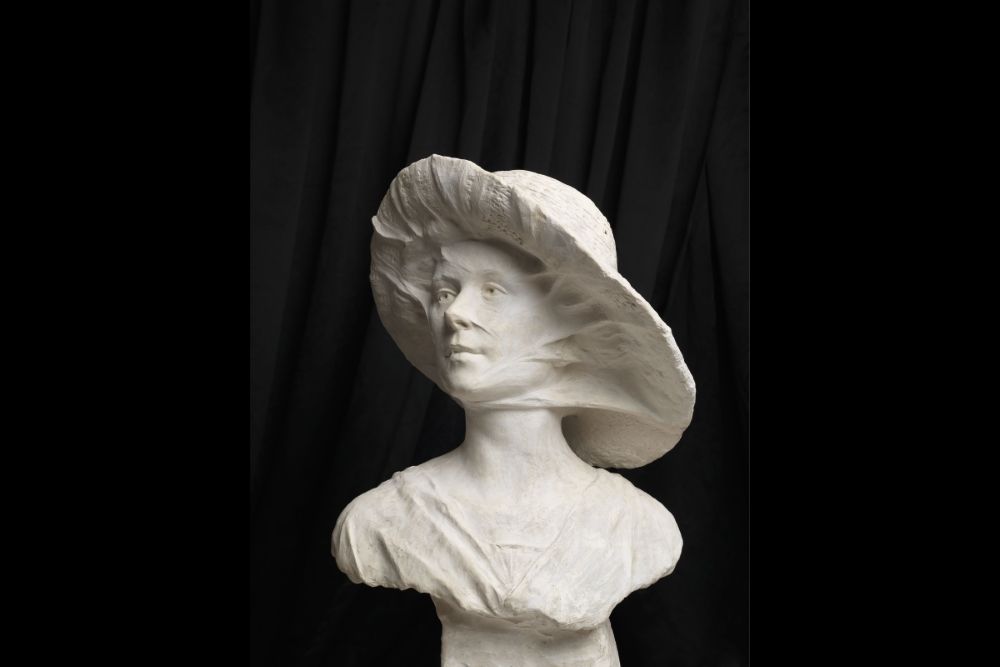
Photo: M Paternoster
The Faces of Ljubljana in the City Museum. Photo: JL Flanner
City Gallery - Not far from the Robba Fountain and running until March 24 is a show presenting drawings by Iztok Sitar, the original pages that were used to make his graphic novels over the last three decades. Rather adult in nature – think Robert Crumb in terms of sex, drugs and religion, in places – it’s free to enter and has much to enjoy. One of the pictures I took on my visit is below.
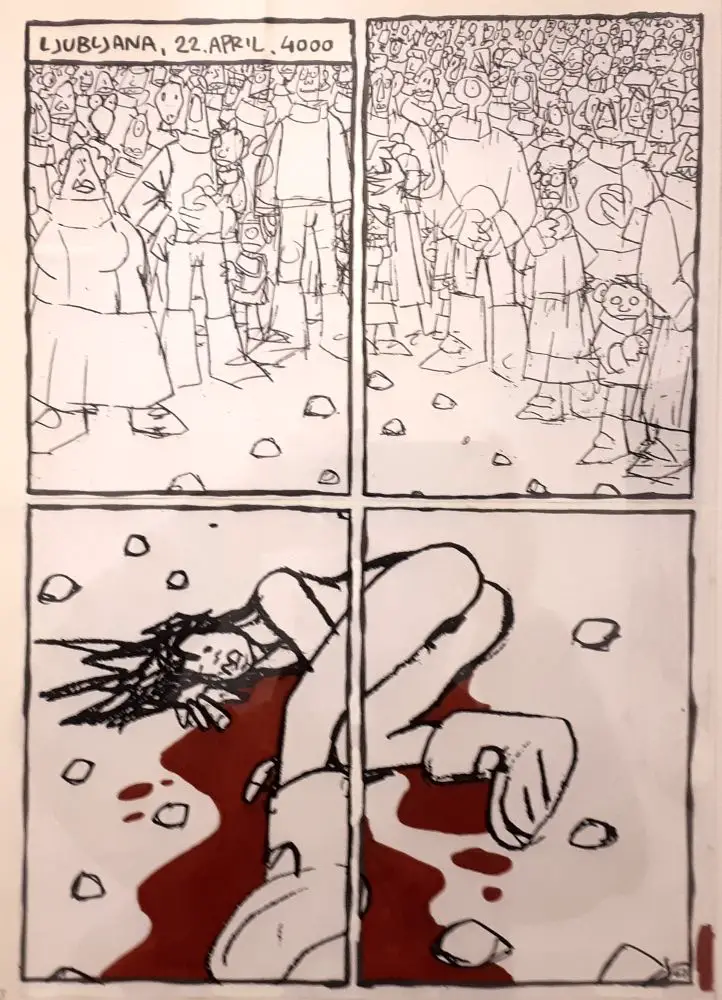
Photo: JL Flanner
Galerija Jakopič – On until March 3 is Over My Eyes (Na moje oči), an exhibition of photographs from Iraq taken by Iraqi photographers.
International Centre of Graphic Arts – Running from Friday until March 3 2019 there will be a show of posters from Milton Glaser, while paintings, drawings, prints and from Nathalie Du Pasquier in a show called Fair Game. The latter is being promoted with the following image.
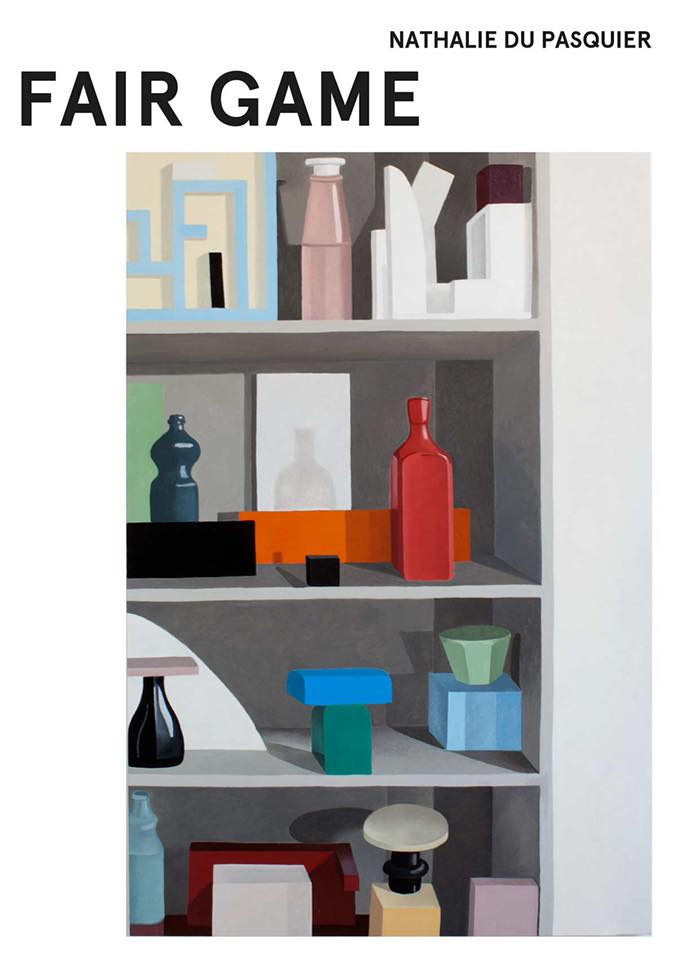
MAO – The Museum of Architecture and Design has much of what you'd expect, and until March 25, 2019, has a show on Ljubljana and it's relation with water. Until February 24 visitors can enjoy Toasted Furniture, which presents some experiments with the reuse of plastic waste, and until February 28 there's a show on Oskar Kogoj and his chairs.
Moderna galerija – The main branch of this gallery, to be found near the entrance to Tivoli Park, has a good collection of modern art, as well a nice café in the basement. Running until March 31 is a major show on young Slovenian painters, Time Without Innocence – Recent Painting in Slovenia, where you’ll see works like the following. You can read about my visit here (I loved it).
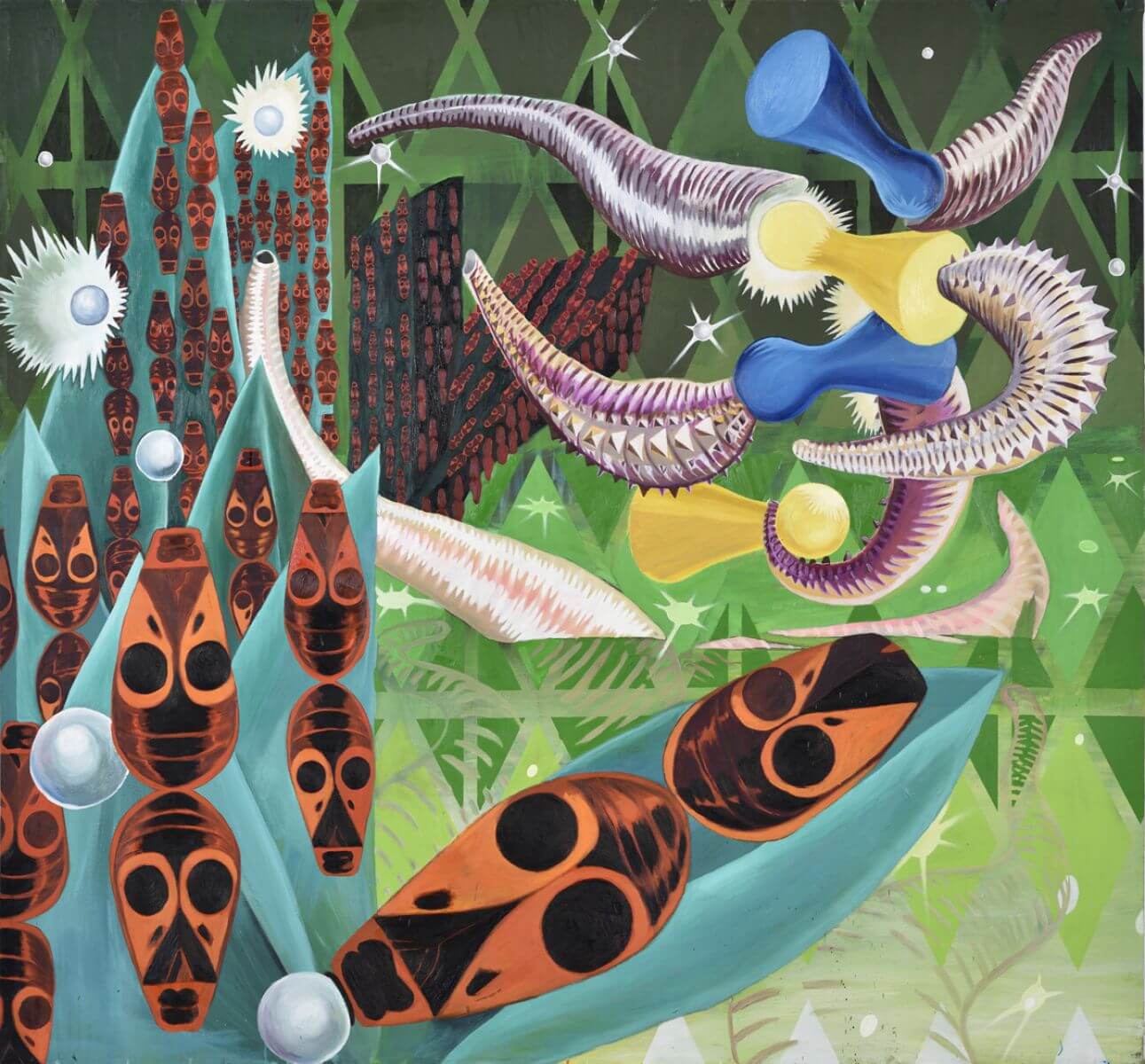
Iva Tratnik, Mating Season Totalitarianism, 2014, oil on canvas, 210 x 194 cm
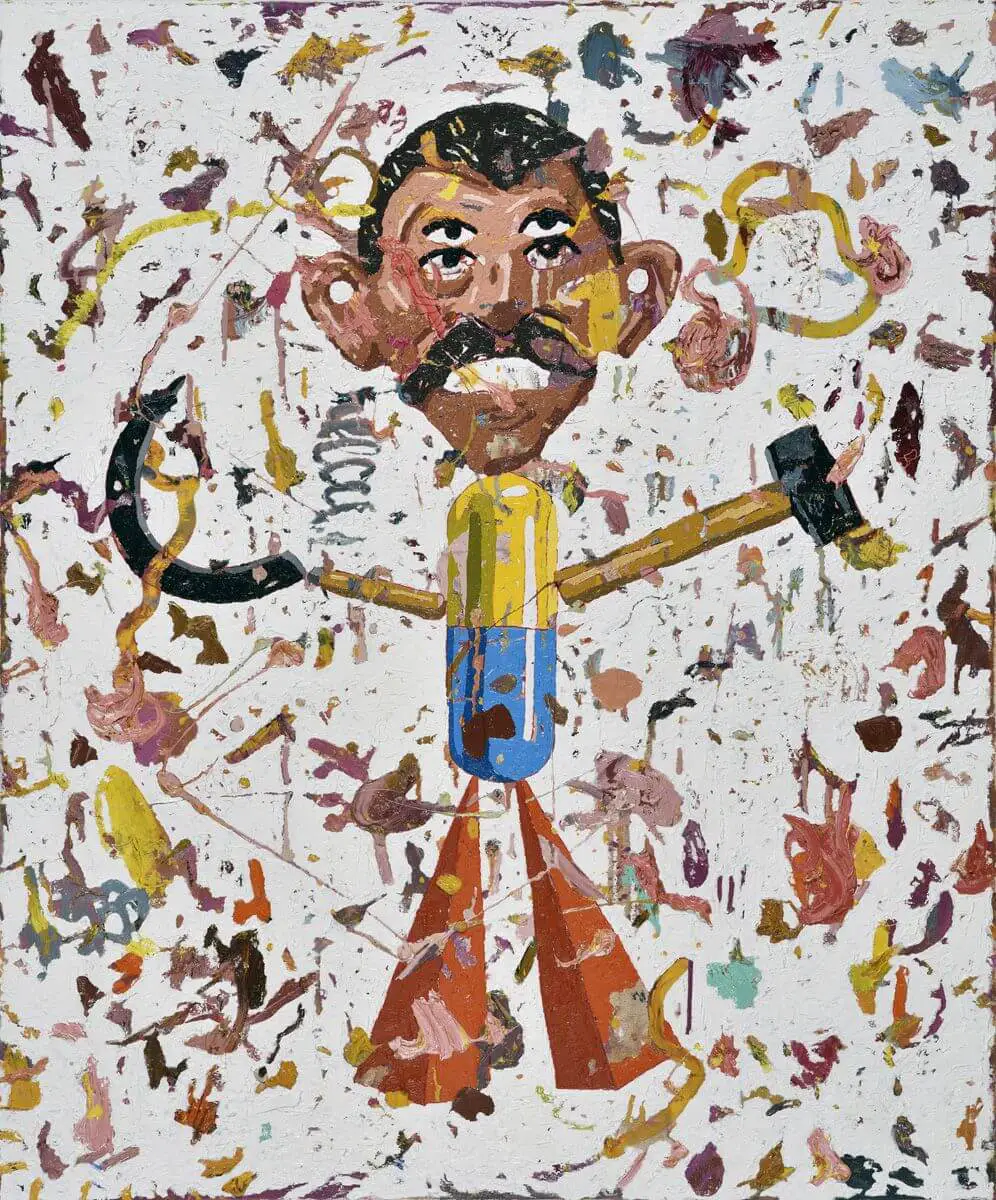
Arjan Pregl, from the Carnival series, oil on canvas (6 paintings 120 x 100 cm; 3 paintings 80 x 60 cm), 2018
National Gallery – The country’s main gallery has “the best” of what’s on offer from the Middle Ages to non-contemporary modern visual arts, and is in a great location for exploring other areas, just by Tivoli Park and opposite the main branch of the Moderna galerija. You can read about our visit to the room containing sacred art from the Middle Ages here.
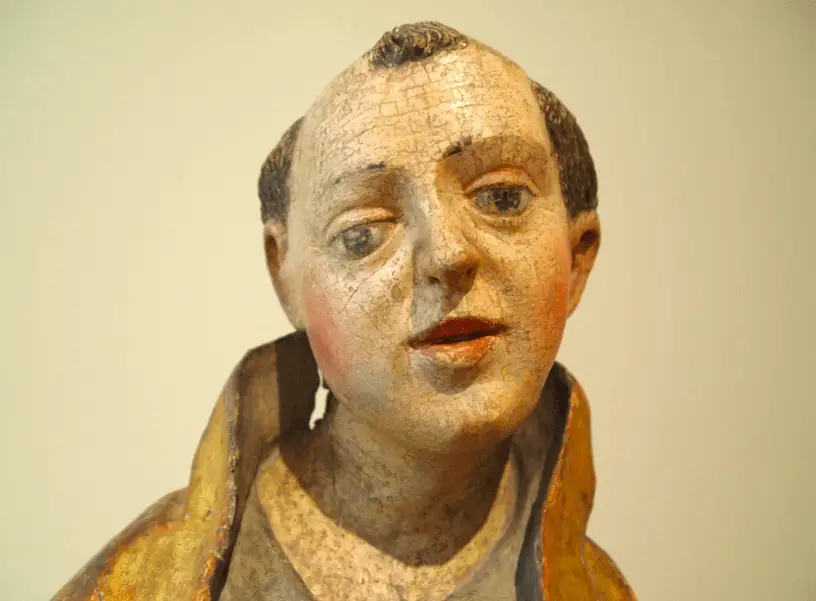
JL Flanner
The real Robba Fountain can be found in the entrance to the National Gallery - the one you see in the Old Town is a genuine fake, as seen below and reported here.
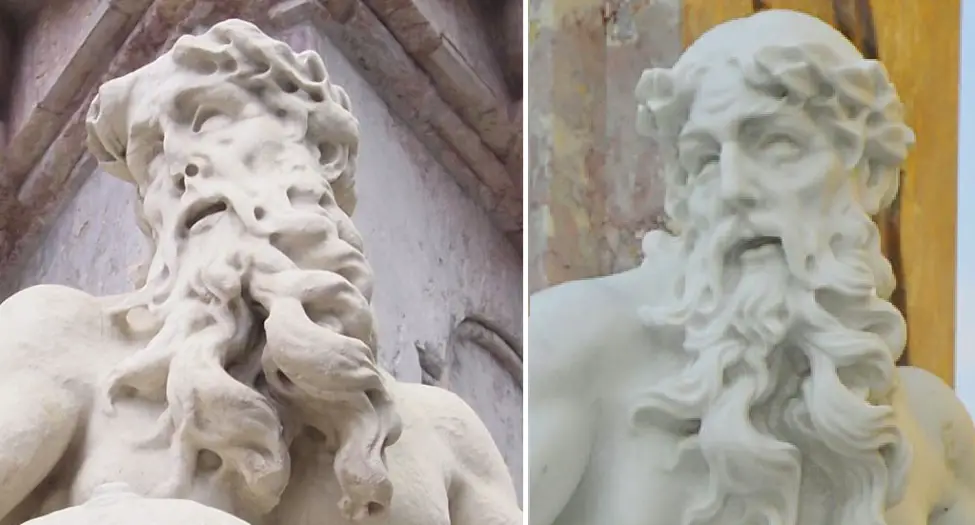
Photo: JL Flanner
National Museum of Slovenia – There’s plenty to see in the permanent collection here, from Roman times, Egypt and more, with the big draw this season being the exhibition of over 140 items of gold from Ming Dynasty China, as reported here, and with an example below. This runs until February 15th.
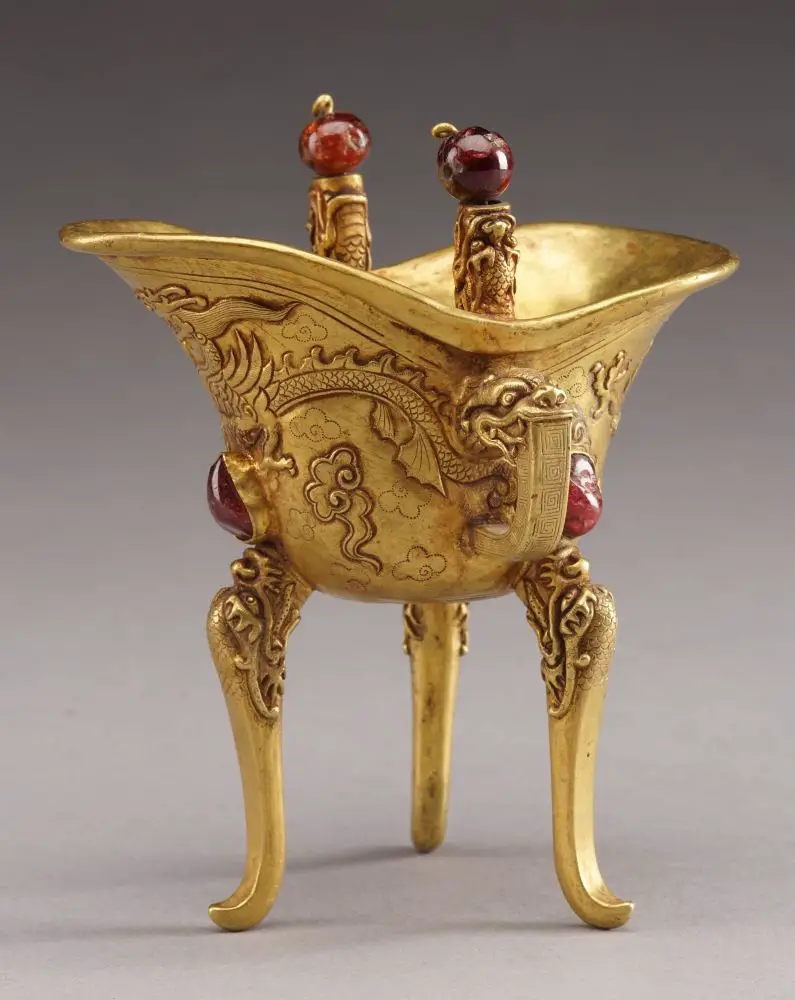
Photo: Wang Wei Chang
Meanwhile, the museum's Metelkova branch, located between one branch of the Moderna galerija and the Ethnographic Museum has some rooms on Church art, furniture and weapons, with the latter including more guns than you'll see anywhere else in town, and quite a thrill if coming from a nation where such objects are not household items.
Natural History Museum – On until the end of June 2019 is Our Little Big Sea, which takes a look at the oceans.
Slovene Ethnographic Museum – The museum currently has a temporary show on Bees and Beekeeping, on until June 16 2019, as well two permanent exhibitions. One of these is called Between Nature and Culture, and has a great collection of objects from Slovenia and around the world, well worth the trip up to the third floor to see it (as recounted here). This place is located near the newer branch of the Moderna galerija and Metelkova.
Union is "the Ljubljana beer", but now both it and Laško are owned by Heineken. There are many local brews on offer around town, though, if you want to explore IPAs, stouts, wheatbeers, sours and so on Photo: JL Flanner
Union Experience – The Ljubljana-based brewer has a museum showing the history of the company, with the ticket also including access to part of the factory and a few samples of the product. You can read about our visit here.
It's not a formal museum, but if you're interested in "Yugo-stalgia" then you'll enjoy a trip to Verba, a small, privately run space that's crammed with objects and pop culture items from the era, and is conveniently located at the start of one of the short walks to the castle. It's also a great place to take pictures, if you leave a donation, and you can read more about it here.
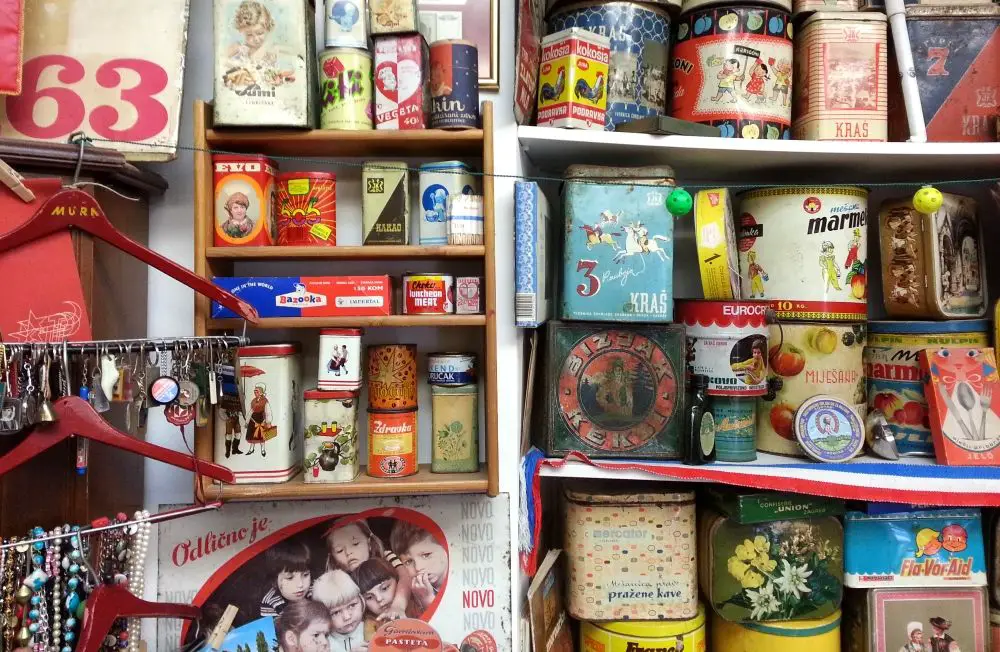
Verba. Photo: JL Flanner
Alternative Ljubljana isn't a museum or gallery, as such, but instead turns the city streets into a museum and gallery. Learn more about their tours of street art, history and LGBT Ljubljana here.
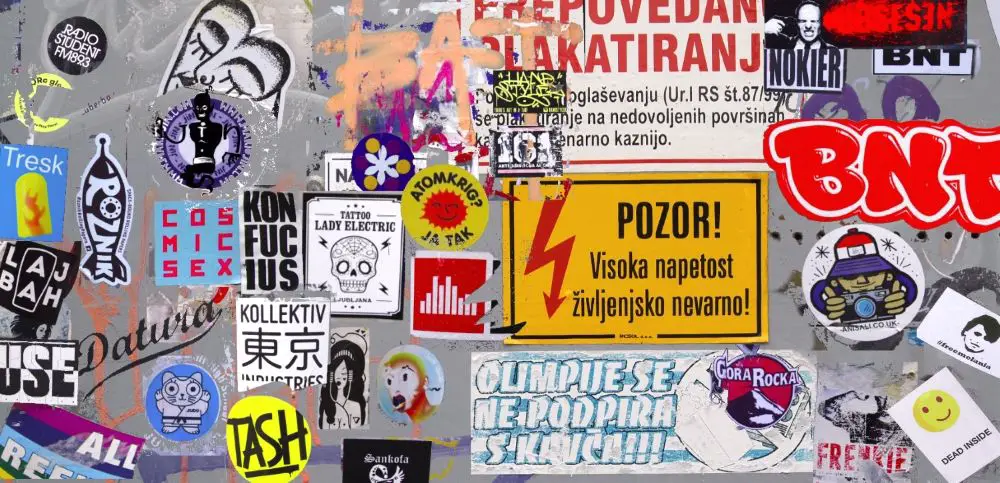
Photo: JL Flanner
Other things to do in Ljubljana
If you'd like to spend an evening painting with others, then take a look at Design with Wine, which organises painting parties on Trubarjeva cesta,
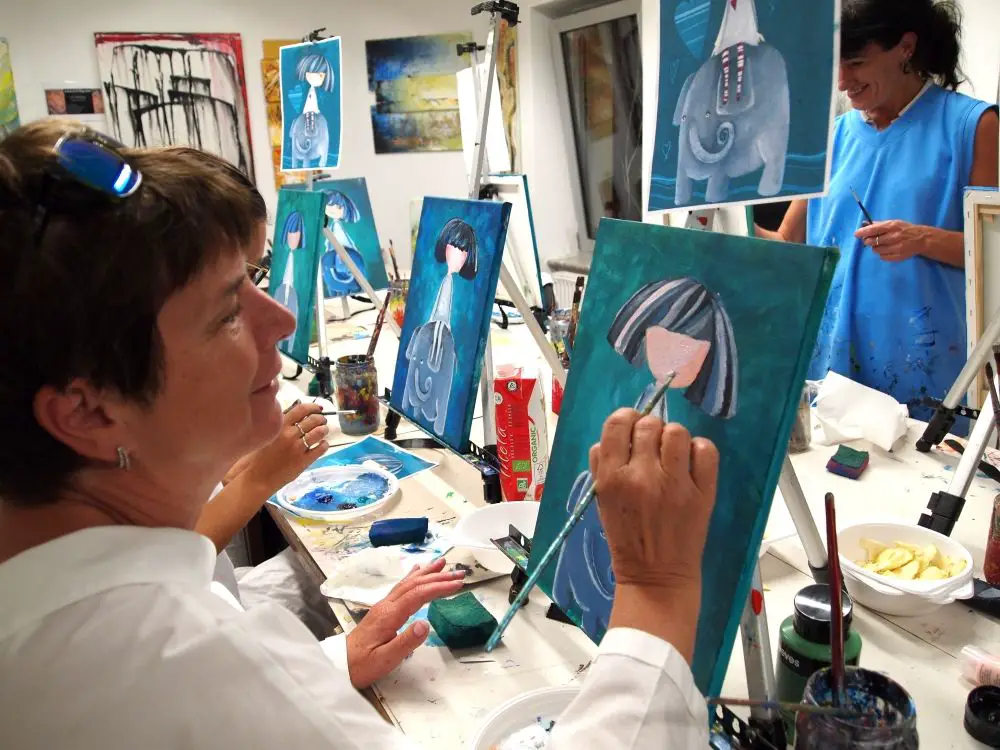
If you want to see some antiques, then check out the wonderful Antika Carniola, as discussed here. The man behind it, Jaka Prijatelj, has a fine eye for life on this street, as you can see on his Facebook account.
Photo: JL Flanner
If you’re in town and want to go jogging or walking in nature, why not take another look at the Castle, with a brief guide to the trails here. If you want something bigger, head to Tivoli Park.
And if you're bored with the Old Town, why not take a walk, cycle or boat ride to nearby Špica and enjoy the riverside life. Learn more about that here.
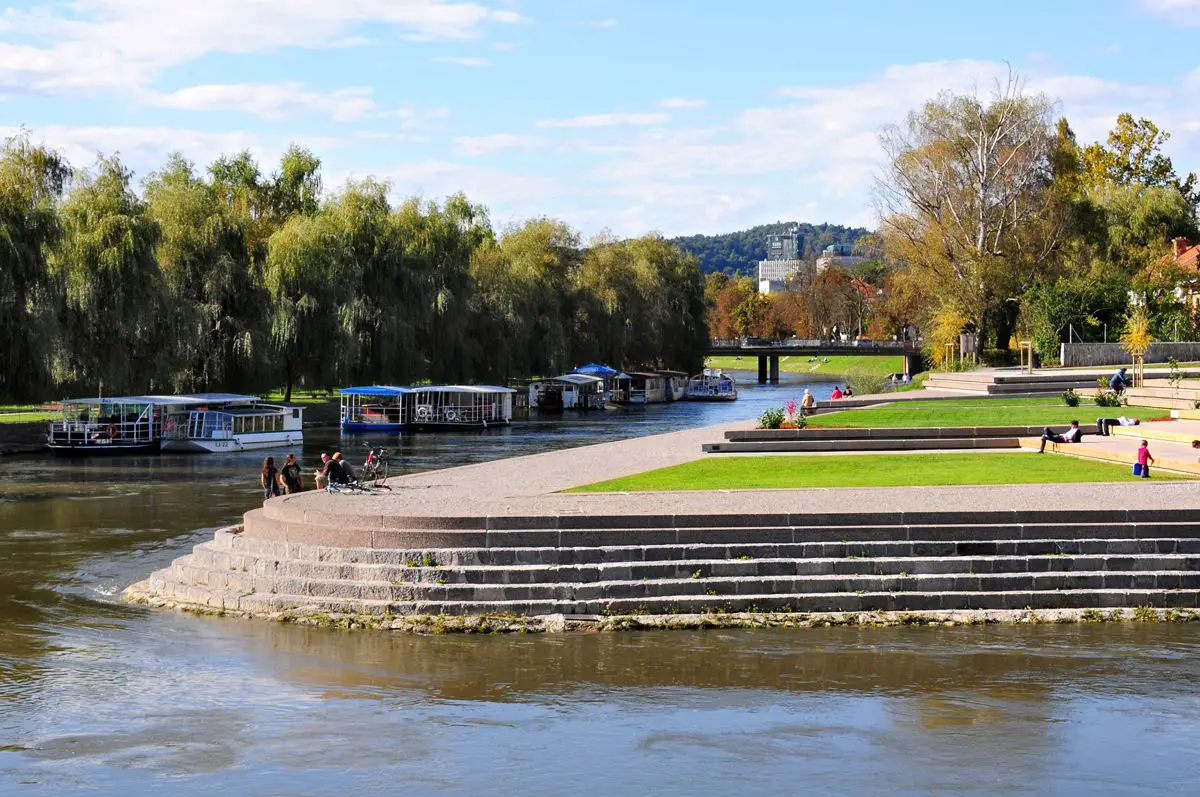
visitljubjana.si
![]()
maxpixel.net, public domain
Want to stretch and breath? Then check out our list of drop-in yoga classes for tourists, visitors and the uncommitted. If you're heading to the coast, check out our interview with a yoga teacher who offers breakfast sessions there, while if you're staying in town (or nearby) and want to try some "family yoga" then you can learn more about that here and maybe get your kids to calm down a moment or two.
There are some golf courses near Ljubljana, but even ones further away are not far, as seen in our list of all the golf courses in Slovenia. Note that these close when the snow starts, if it ever does this year, in which case you might be interested in what's new at Slovenia's ski resorts for 2019, as reported here.
![]()
Photo: maxpixel.net, public domain
Daytrips
Most of Slovenia is only a few hours from Ljubljana, and you can easily visit Lake Bled, Lipica Stud Farm, Postojna Cave, Predjama Castle, the coast and other locations, while if you'd like to take a photo of from that bench in Bled, then you can learn how to get there here. If you’re looking for something more ambitious, then check out our recent guide to the 17 members of the Association of Historical Towns of Slovenia
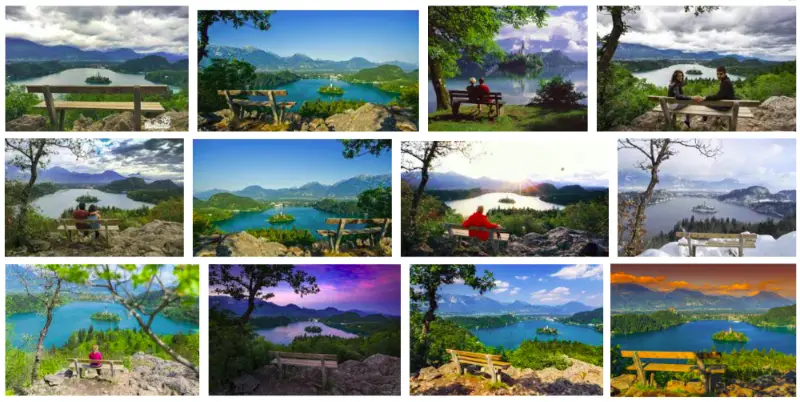
Photo: Google Image Search
Getting around
If you want to get a Ljubljana Tourist Card, which gives you travel on the city buses and entry to a lot of attractions, then you can read more about that here, and if you want to use the bike share system, as useful for visitors as it is for residents, then you can learn more by clicking this. Visitors with reduced mobility will be pleased to find that downtown Ljubljana is generally rated as good with regard to accessibility, and that there’s a free, city-sponsored app called Ljubljana by Wheelchair highlighting cafés, attractions and so on with ramps, disabled bathrooms and Eurokey facilities, which you can read about and download here. Manual wheelchair users can also borrow, for free, an attachment that will motorise their equipment, as reported here.
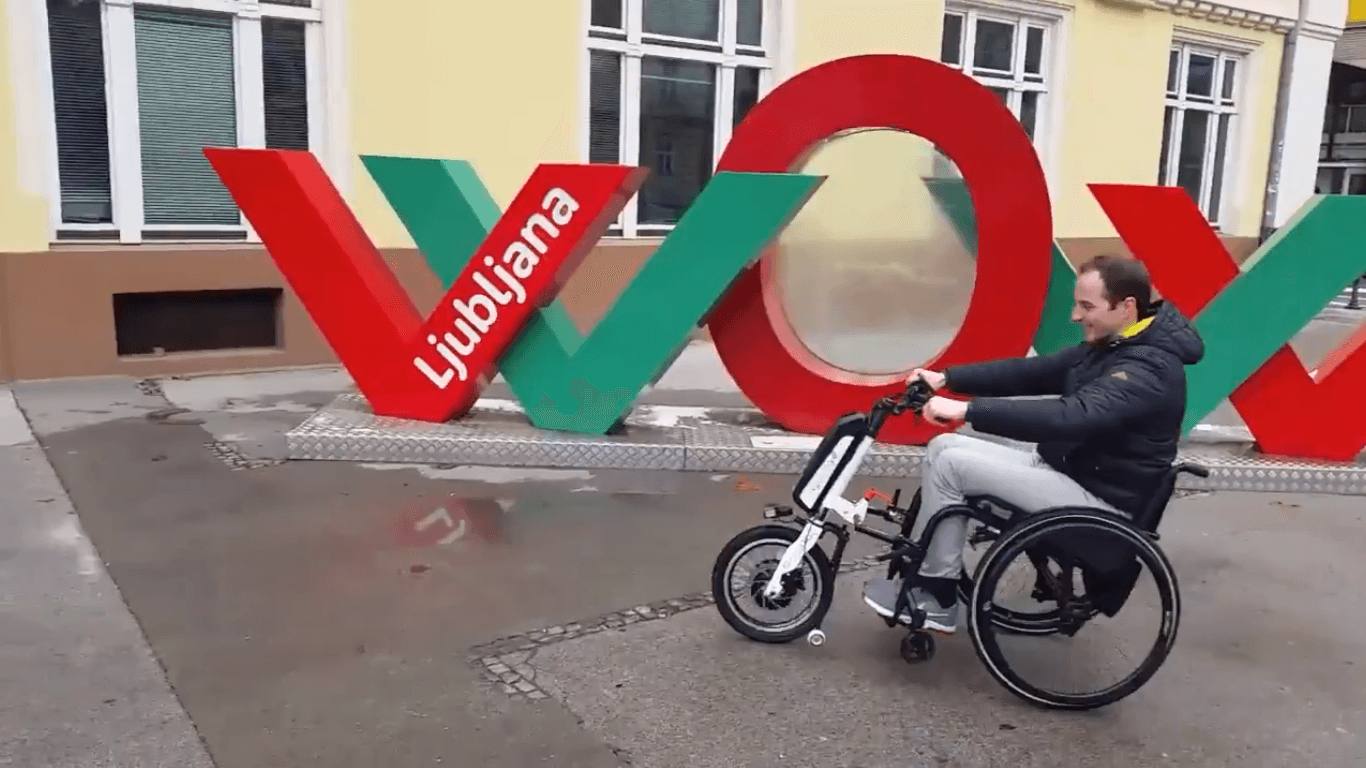
Screenshot from a Twitter video
If you’re driving into town and don’t know where to part, our guide to how to park in Ljubljana is here.
There aren't many places to eat after midnight, and most of them are by the train station, as reported here.
Want / need cigarettes but the stores have closed? Here's an incomplete list of bars downtown that will satisfy your craving for the demon weed. While if you’re having trouble with the ATMs then here’s a guide to the Slovene you’ll see on screen. If you get a hangover then find out where to get paracetamol (and prescription drugs) in Ljubljana here, while details on emergency birth control can be found here.
Ljubljana is a small and relatively safe city, but if need to contact the police then there’s a special number for foreigners, and that’s 113.
In 2018 SILA – or SILA-IWCL, International Women’s Club Ljubljana, to give the full name – celebrated 25 years as a focal point for foreign women in Slovenia, as well as Slovenians who want to connect with the international community. But in doing so the group looked to the future more than the past, with the social changes that have taken place over the last quarter century increasingly reflected under the leadership of Marta Helena Berglez, along with greater engagement with a wider and more diverse community.
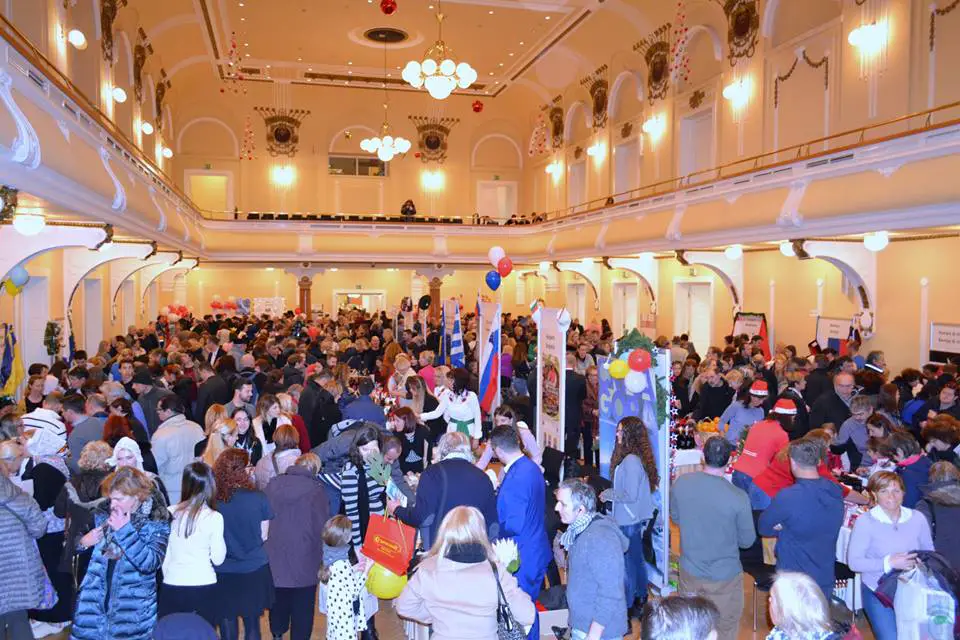
The annual bazaar
While SILA started as an association for the wives of diplomats and businessmen, who needed something to keep them busy while stationed abroad, it’s now shaken off the old image and is open to any and all women, no matter what their marital or professional status, Slovenes included.
As noted in an earlier article, SILA organises a broad range of events and activities for its members – cultural, sporting, educational and more – with the aim of bringing people together and making new connections, with each other and with Slovenia.

An important aspect of the latter is SILA’s charity work. This finds its greatest public expression in the annual bazaar, held each December in the ballroom of the Grand Hotel Union, but this year there’s a new event in the schedule, the Spring Soirée. This will be held on Saturday, March 30, and will present an evening of food, drink, music and dancing in diverse company, drawn together out of curiosity and all for the benefit of Europa Donna. This is an independent, Europe-wide organisation that represents the interests of women regarding breast cancer to local and national authorities, as well as to institutions of the European Union. The current vice-president of the group is Tanja Spanic, a Slovenian cancer survivor who will be one of the speakers at the evening, which aims to raise money from ticket sales (€55 each) and donations.
If you’d like to learn more and perhaps buy a ticket to Spring Soirée, or if you work for a company that might be interested in sponsoring a table and making a presentation to the guests, then you can learn more here.
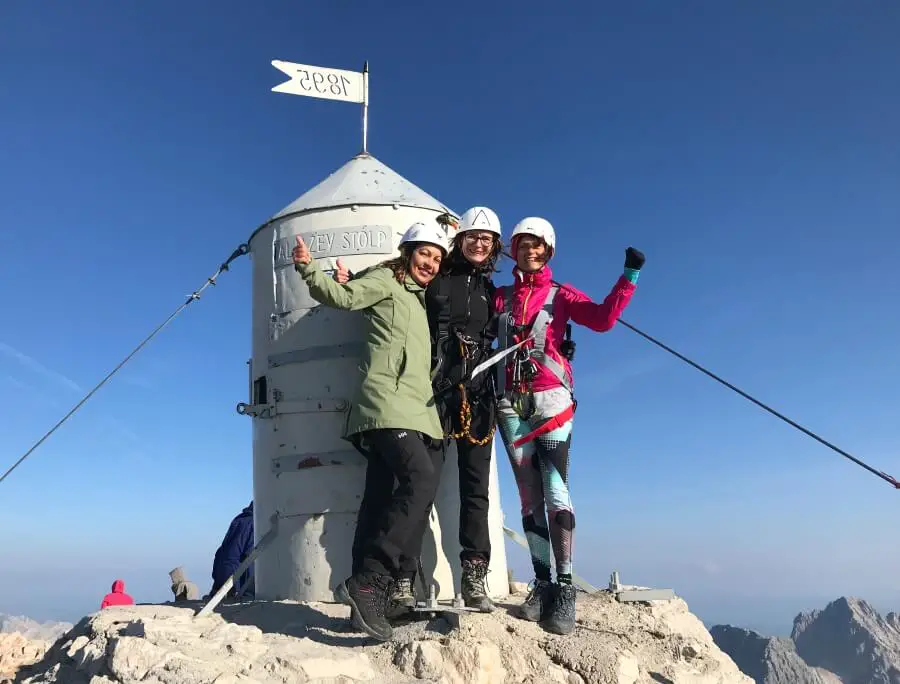
If you can’t make it on March 30 then don’t worry. A good way to keep up with SILA and its activities is to follow the group on Facebook or visit its new webpage, while the best way is to join and start meeting new people and doing new things, opening up a world of opportunities in Slovenia, both personal and professional.
Slovenia has no shortage of niche events and festivals for those who still enjoy the pleasures of the big screen in public, from Kinodvor’s Film Under the Stars at Ljubljana Castle to the Grossmann Fantastic Film & Wine Festival, which brings horror and honest trash to Ljutomer. However, it’s something that’s occurring next week is that’s perhaps the most Slovenian of all – the Mountain Film Festival (Festival gorniškega filma).
1. Slovenian climbers rock
We’re huge admirers of the past and present of Slovenian climbing here at TSN, be it folks with names like Čop, Kunaver, Zaplotnik, Štremfelj, Prezelj, Karo, or Humar in the Julian Alps, Himalayas, Yosemite and Patagonia, or on the wall in sports climbing with figures such as “the best climber in the world”, the still teenaged Janja Garnbret from Kranj. In short, Slovenia has played and continues to play an outsized role in the world of climbing, with many first ascents and new routes. Learning about it will help draw you closer to the land, and you may even end up on Triglav.
If you want to read more about the history of the scene here, take a look at the book Alpine Warriors.
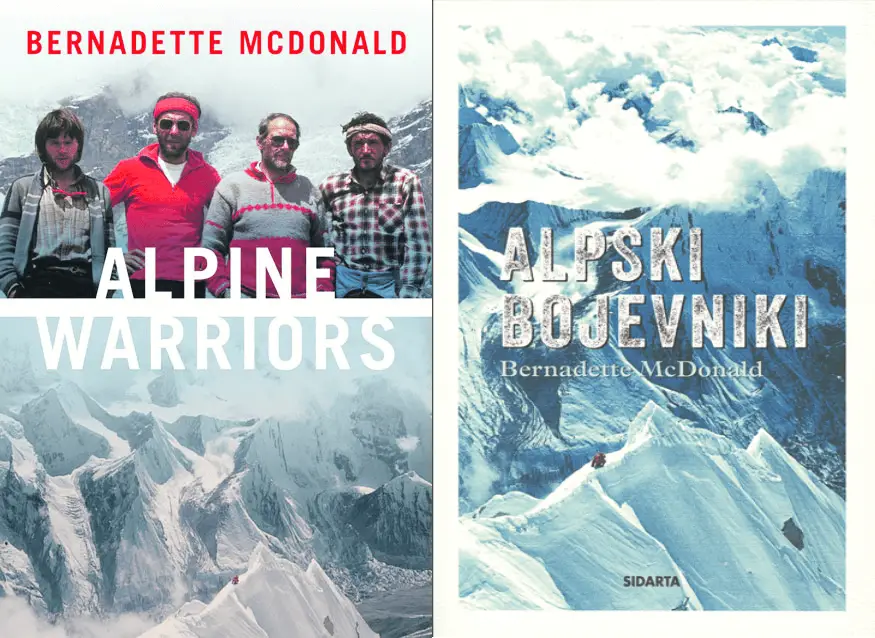
2. Big screen adventure
So the festival’s got that Slovenian cultural heritage going for it – it’s organised by the Mountain Culture Association (Društvo za gorsko kulturo) and the legendary Silvo Karo – but for me the chief appeal is this: these films will be presented on screens far larger than the ones you have at home. They’re thus are better able to convey the full majesty and terror of the scenes on display (as Aleš Kunaver said, “in the mountains magnificence is diametrically opposed to comfort”).
That movie about the guy who climbed that thing without a rope? Imagine seeing this on something much, much bigger:
3. The programme is world class
The programme looks great, with most of the big mountain features and shorts from the last year or so, and there are also movies on topic adjacent to climbing, like the night sky or environment, so we’ll just present the following convenient selection of trailers, with a lot more to be found at the website.
Cerro Kishtwar - Thomas Huber, Stephan Siegrist and Julian Zankar from Rock & Ice on Vimeo.
Everest Green | Trailer VF from Block 8 Production on Vimeo.
IN THE STARLIGHT - Official Movie Trailer from Mathieu Le Lay on Vimeo.
The Undamaged - Official Trailer from Leeway Collective on Vimeo.
4. A chance to meet the stars
What else can you expect at a mountain film festival in Slovenia? Climbers, and great ones – on the screen, on the stage and in the audience, many of whom live a short drive from the event. Sp Andrej Štremfelj will give a lecture about his ascent of Everest in 1979, when he climbed with the legendary Nejc Zaplotnik, while Aleš Česen and Luka Stražar will be there talking about their ground-breaking ascent, done with Tom Livingstone, of Latok 1 in 2018, “the Holy Grail of high altitude climbing”.
Other names set to talk about their lives and climbs include Rado Kočevar, Hansjörg Aeur, Klemen Bečan and Marija Jeglič. Beyond the Slovenian scene, Colin Haley will be talking about sport alpinism, and one event that’s sure to inspire heated opinions is a roundtable discussion: “Drilling – pitons or bolts?”
5. It’s not just in Ljubljana
While the main events are held in Cankarjev dom, the festival is not confined to the capital. It also has screenings and lectures in Domžale, Celje and Radovljica, while the winning movies will play everywhere (except Celje) at the end of the festival.
You can get a PDF of the programme here
Bonus - the website is ice cool and clean
With a website that's easy to navigate and comes in Slovene and English varieties, letting you search by day, event and venue, the Slovenian Mountain Film Festival offers a perhaps unique chance to see these films on the big screen, with an audience that knows what it’s watching, in a country in love with its mountains.
Related: see all out posts tagged "mountaineering" here
The Balassi Institute is the Hungarian cultural centre in Ljubljana, where you’ll find art, music, performances, readings, literature, workshops, screenings, lectures, parties, cooking and more, all of which serve to bring a flavour of Slovenia’s eastern neighbour to the capital.
I recently visited to learn more about the place, and sat down to drink coffee and record a conversation with Institute’s director, Bíborka Molnár-Gabor.
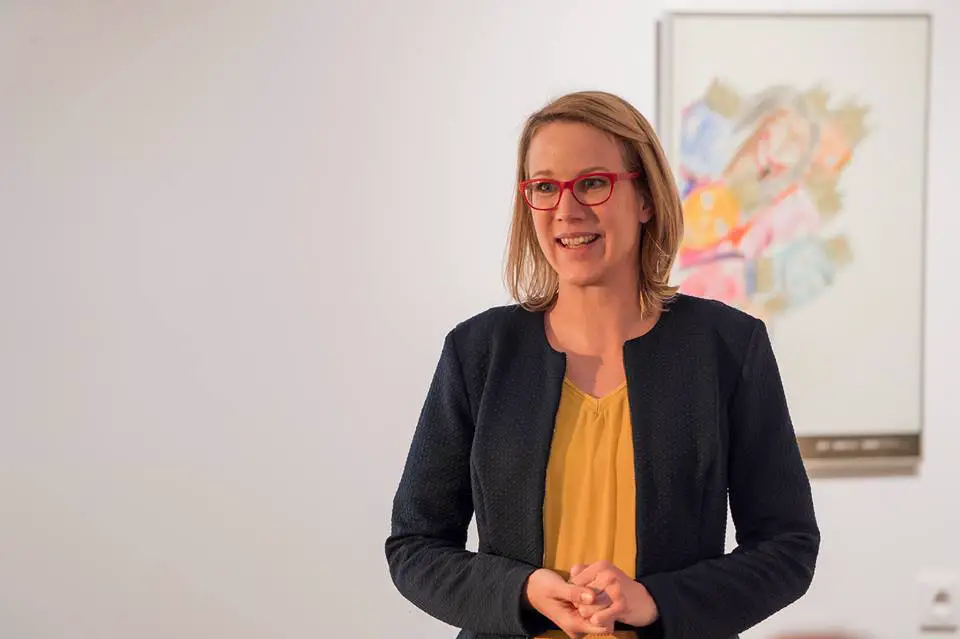
The Institute's director, Bíborka Molnár-Gabor, speaking at an event
How did you come to be in Ljubljana?
I arrived in Slovenia in 2010, and I came here for work. At that time only a few of us were speaking Slovenian in the Hungarian Ministry of Foreign Affairs, and so that was a big advantage for the job of cultural attaché in Ljubljana.
Did your family speak Slovene in Hungary?
No. I learned Slovene at the university in Budapest, but as a hobby, not main subject. Of course, there are minorities on both sides of the border, so there are some people who speak Slovene in Hungary for family reasons, but out of interest, not so much.
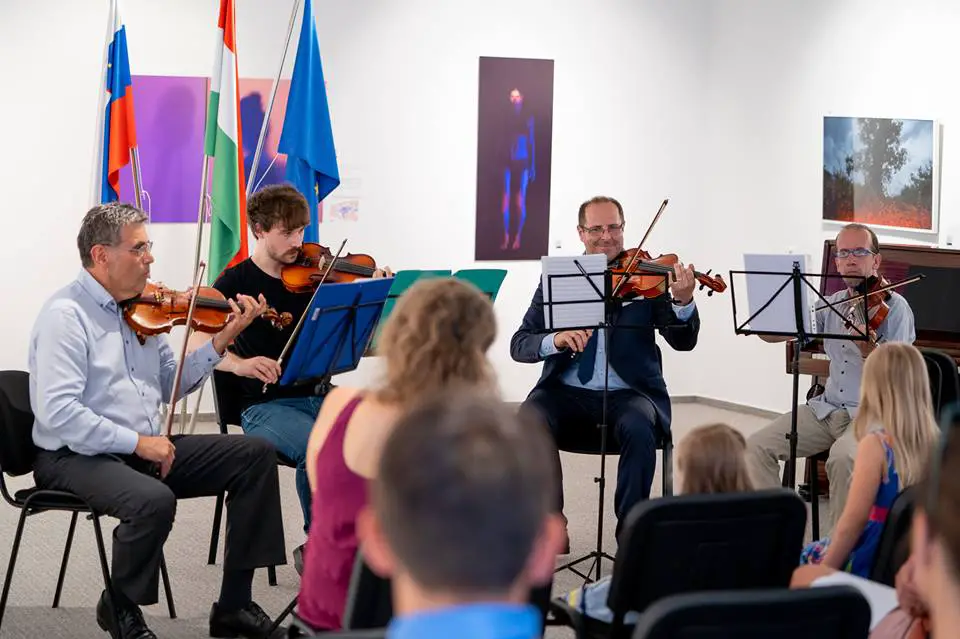
There are regular musical performances, all free...
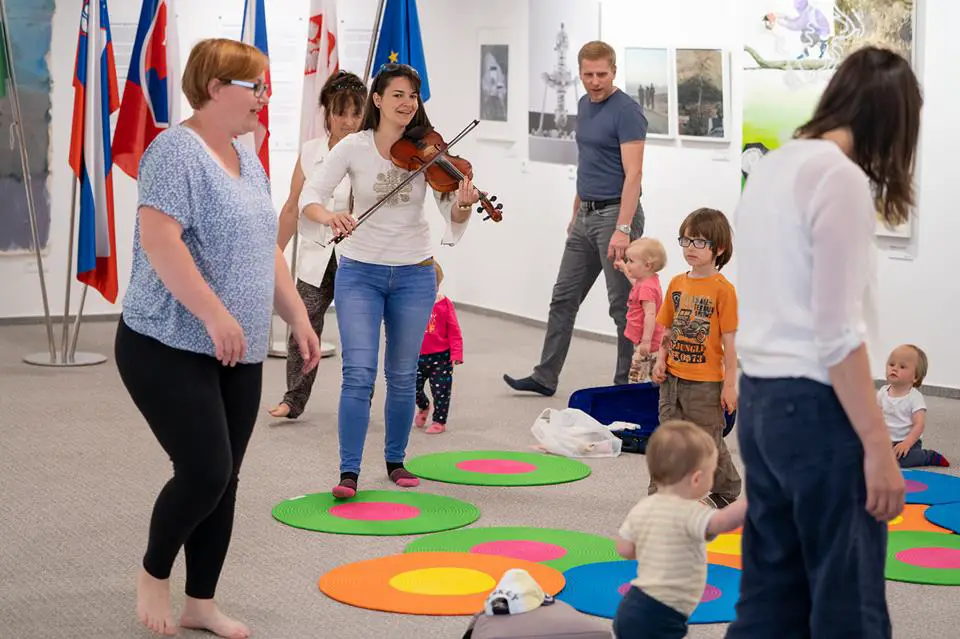
...including events for even the youngest audiences.
How did you make the move from the Embassy to the Institute?
By training I’m an economist, , and so after the posting at the embassy, I was also working at Ernst & Young, in tax advisory. Then when the Balassi Institute opened in 2016 I applied for this position, because I wanted to stay in Slovenia and help build connections between the two countries, and I like it here. I think after three years we’ve had some good effects, in terms of creating a more favourable image for Hungary, of helping people to understand the country and its culture, and of course to get more familiar with the language.
Related: Meet the People - Éva Schwetter, a Hungarian teacher in Ljubljana
And does the Institute only focus on culture?
That’s a lot of our work, but not all of it. For example, we also cover travel and tourism, and so people can come here and ask any questions they have about that. And there’s education, too, so if people would like to study in Hungary they can also come here for advice. But for business issues, and political ones, that’s the Embassy’s work.
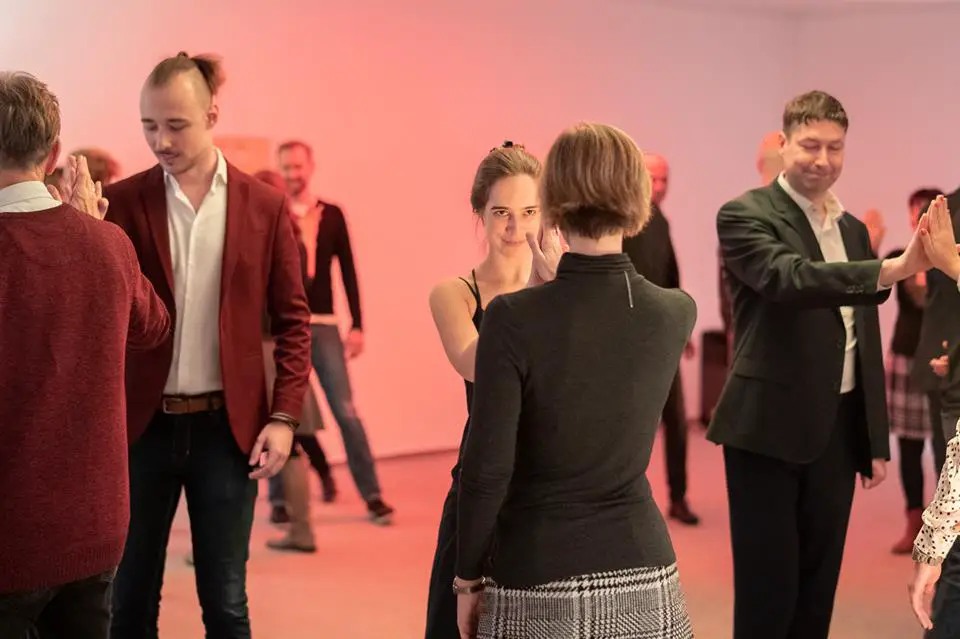
There's also dancing...
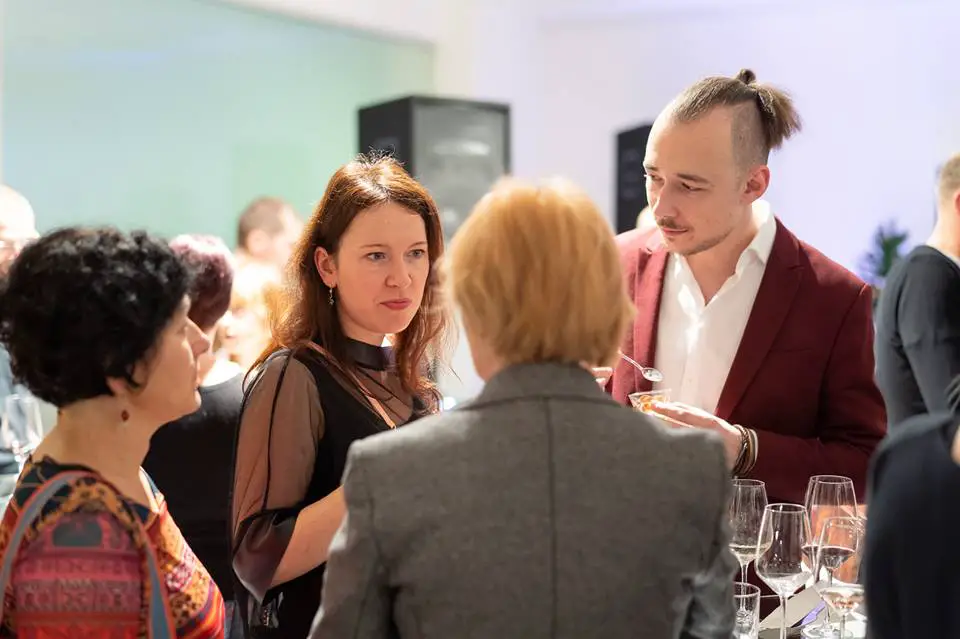
...and drinks.
You organise a lot of events – musical, culinary, literary, and so on. Are these open to everyone?
Yes, and most of them are also free to enter as part of the promotion of Hungary. However, sometimes when we work with Slovenian partners outside of the premises of the institute there’s a small entrance fee, which goes directly to our local partners. The events are also unticketed, with no reservations needed, so if people see something the like they can just come along. (The schedule is here)
How much freedom do you have with the programme?
We have quite a free hand here, because the theory is that the head of each Institute knows the country they’re based in well, and understands the points of contact and connection with Hungary. Of course, we have to hand in yearly plans that need to be confirmed by the Ministry, but these are usually approved, with very small changes. The Culture Board at the Ministry also prepares a package of proposals each year, and the Institutes can choose from those.
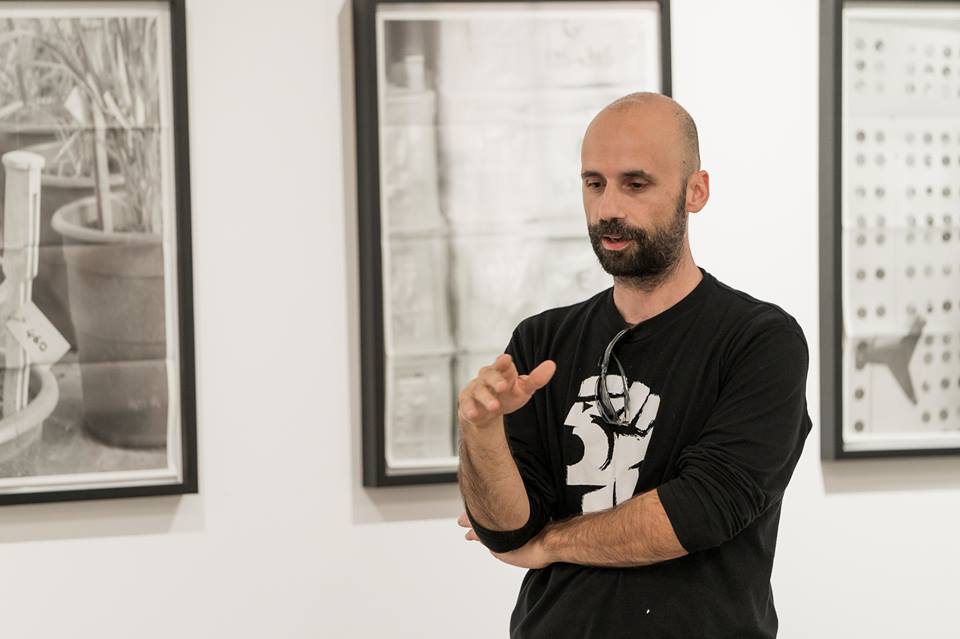
Visual art...
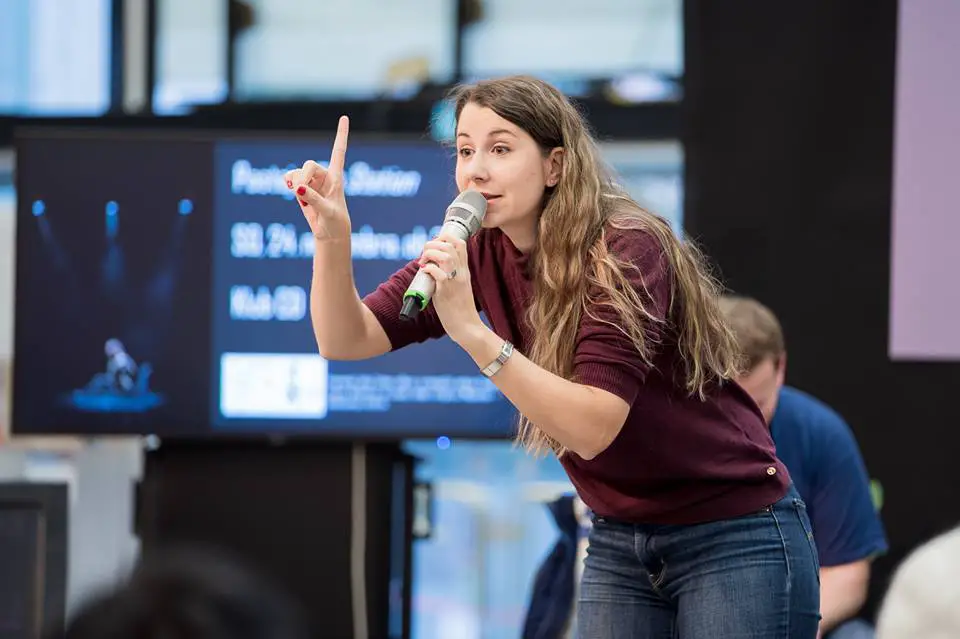
...and debate.
What are some events you’d like to highlight?
We have a lot of variety – art, music, literature, film, and a lot of activities for children. For example, we have regular music workshops for children, suitable for babies too, and every second Tuesday, 18:00, we have folk dancing with a teacher. Personally, I most enjoy the literary series. In 2019 we’re working with more Slovenian publishing houses to promote some translations of Hungarian literature, with some of the authors coming here for talks, and that should be very interesting.
Will they be in Slovene?
Hungarian and Slovene, I think, because we’re in Ljubljana. We do have some materials in English, and some events. For example, we often show films, and if a film has already been shown in Slovenia, on TV or in cinemas, then it has Slovenian subtitles. Sometimes there are also English ones, so we try and engage as many people as possible here. People can also use English or Slovene with any of the staff here. Two of us are Hungarian.. Then we have two local staff, one of whom is from Prekmurje, so she grew up speaking Hungarian.

Performances...
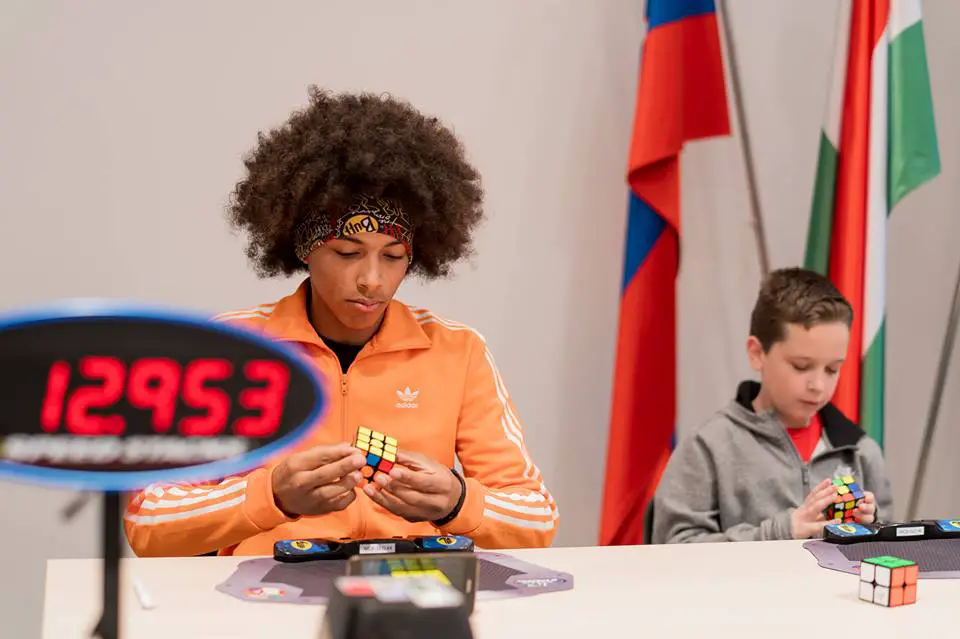
...and competitions.
Finally, what's something from Slovenian culture that you’d like to introduce to Hungary?
I think contemporary art in Slovenia, especially film and video installations, is very good, and at least as strong as in Hungary, so I’d like to show that in Budapest.
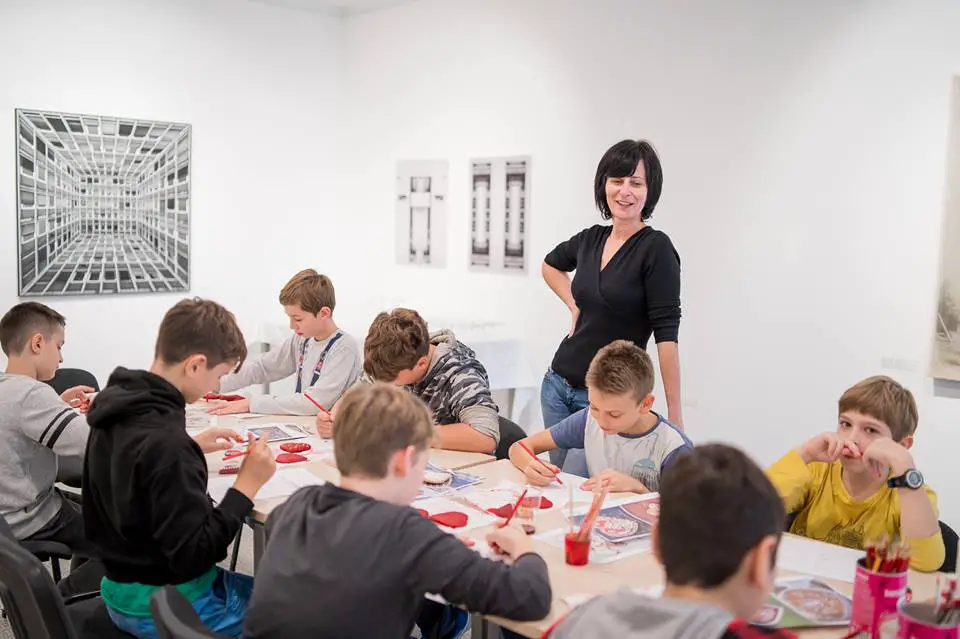
Workshops...
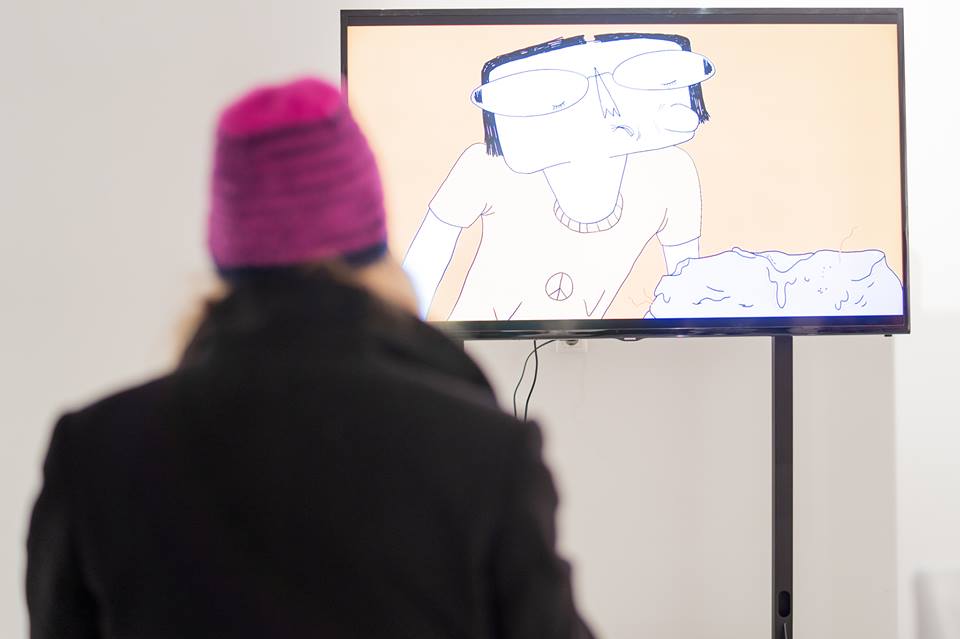
...and other things of interest
You can visit the Balassi Institute at Vila Urbana, Barvarska steza 8, which is just a short walk from Dragon Bridge going out of town on the Castle side of the river, next to a Spar. It’s open 11:00 to 19:00 Monday to Friday, unless an even runs longer, and you can see the current schedule here.
STA, 11 February 2019 - More than 21,000 people have signed a petition urging reform of the Slovenian education system to make it more children friendly. However, two former ministers warn that rash and radical changes may backfire.
The petition has been launched by a parents' association called the Parent Council, whose chairman Nataša Šram says that "generations before us have been warning something is amiss with our education system".
The initiative calls for reducing the volume of syllabus and homework, for more descriptive grading, and for transforming the school-leaving exams into entrance examinations for secondary schools and colleges.
The parents propose reducing the syllabus by getting rid of useless content in the curricula, and cutting down on homework by giving the teacher more scope for revision at school.
"The petition was drawn up because we realised that as parents we cannot do much through parent councils [at schools] and because the petition is the only way to impact the education system's regulation," Šram told the STA.
She would not single out any of the 14 changes proposed in the petition, also because many are interlinked so several should be implemented at once.
Parents complain about pupils’ workloads, class sizes and grades
She believes that the changes affecting the scope of the syllabuses and homework and those concerning grading could be carried out quite fast. One of the demands is reducing the size of class to 24 children.
Anton Meden, the chairman of the Parent Council Association, an association bringing together parent councils at Slovenian primary schools, would like a sober debate based on arguments.
"It's hard to say whether the students are over- or under-burdened, but fact is they have many more subjects and more grading than in comparable European countries, in particular in final years of primary school.
Related: Primary, Secondary and Tertiary Education in Slovenia
"As far as homework is concerned, there are no objective data as to whether there's too much, but we have reports from parents that its volume has been increasing in recent years," Meden told the STA.
He has compared primary school syllabuses with those for the same subject at secondary school and at the university, "finding that they are taught a lot of complexity in primary school".
He said that parents were also reporting that increasingly complex content was being moved down to ever younger children and students.
However, Meden also says that before any changes are made analysis should be conducted and then changes made only based on the findings.
More data needed before action is taken
"Our association wrote down our observations (some of them similar to those in the petition) last spring before the general election, but we didn't offer ready-made solutions because we believe we need hard data first and then a thorough rethink before we take measures."
Similarly, two former education ministers, Slavko Gaber and Maja Makovec Brenčič, warn against too fast or too radical change.
"The worst thing that can happen to the schools system is an ad hoc approach," Gaber told the STA on the sidelines of a debate on private schools hosted by President Borut Pahor last week.
Gaber, who served several terms as education minister in 1992-1999 and 2002-2004, does not support proposals such as reintroducing entrance examinations or scrapping national school leaving exams.
He also has misgivings about any "disburdening" of primary or secondary school students. "Our school is comparable to schools elsewhere around the globe, even to the best ones," he said.
He believes that investing time and money pays off, adding that Slovenia "can also have a system that won't demand almost anything, if that's what we want, but the outcome will be such as well".
The debate will continue…
Makovec Brenčič, the education minister between 2015 and 2018, says that any change should be taken step by step and based on a consideration as to what it is that you want to give to the students.
She is a supporter of the national school exams, and introducing such exams, currently held in the 6th and 9th year of primary school, for year 3 children to check on how their learning is upgraded throughout school.
In response Šram says that it is not radical changes that their petition calls for and that the parents would be happy if at least something changed, such as halving the number of grades.
The petitioners have been invited to discuss the issues and proposals they have highlighted with Education Minister Jernej Pikalo at a meeting on Tuesday.



